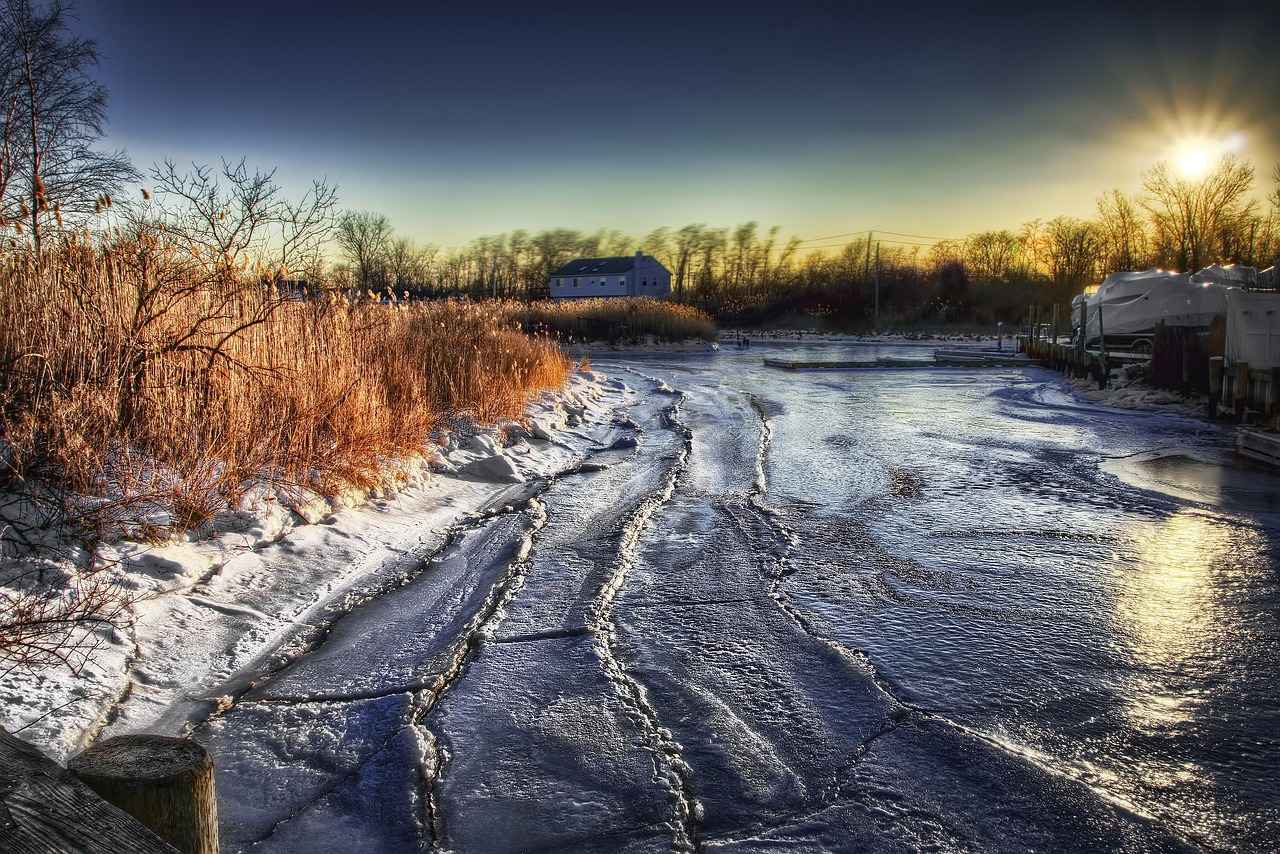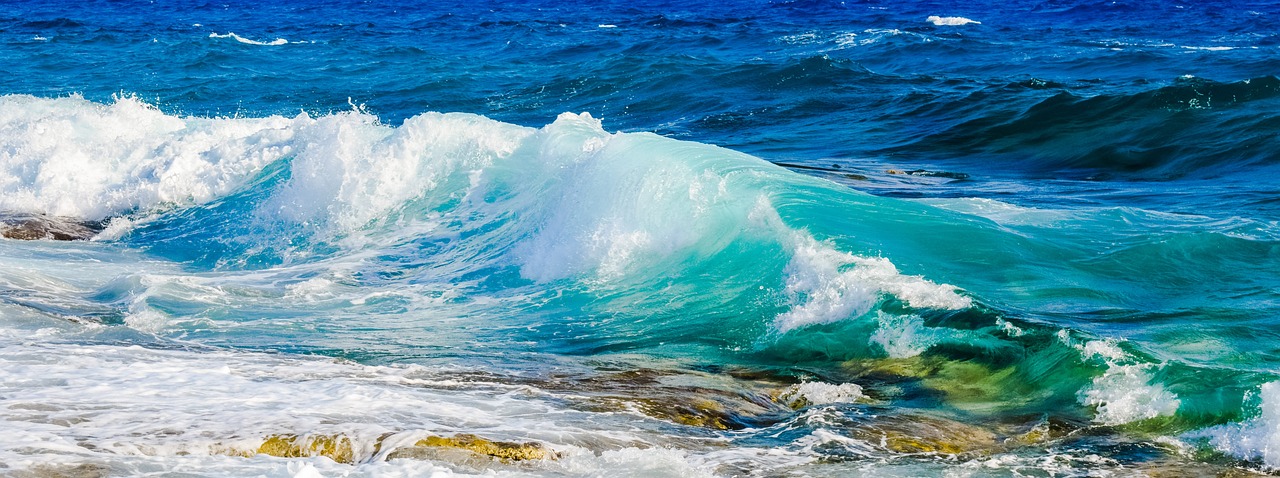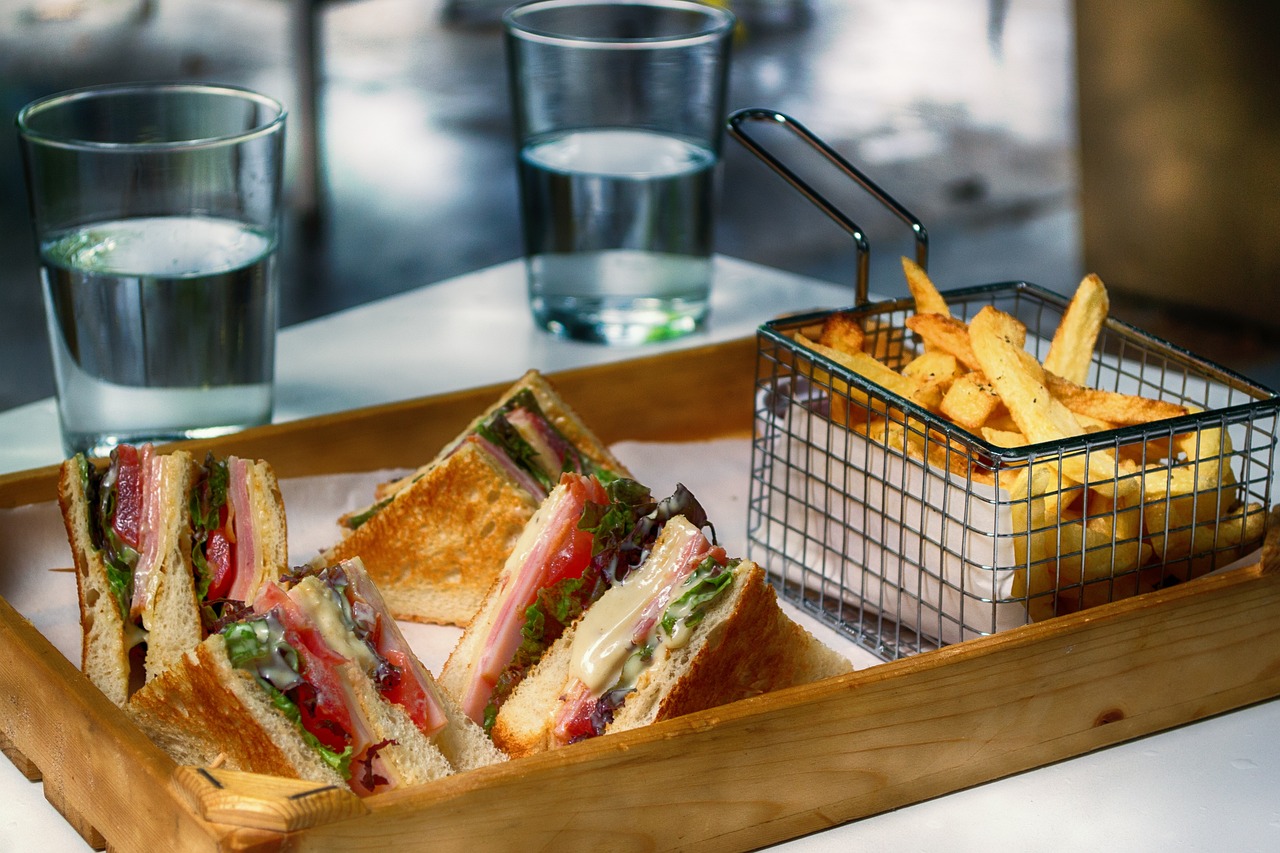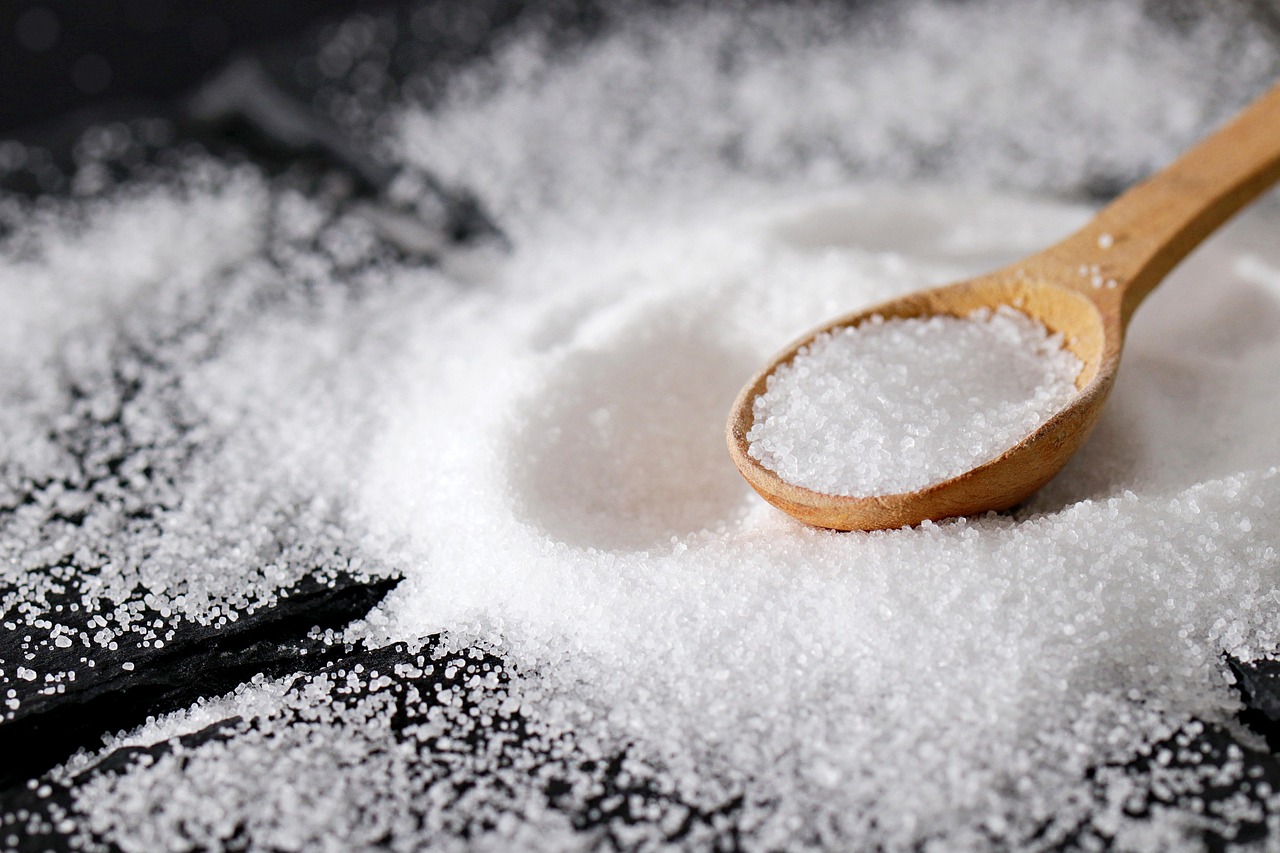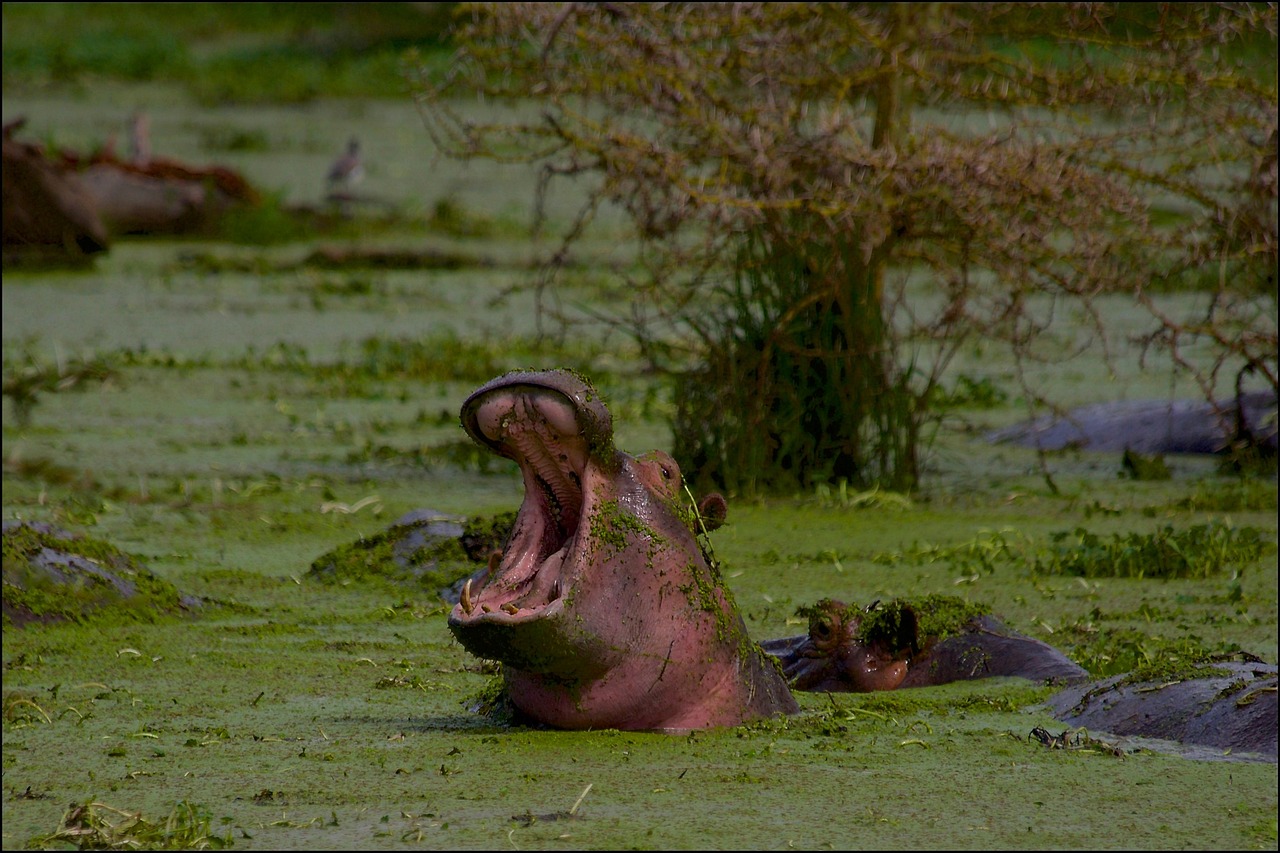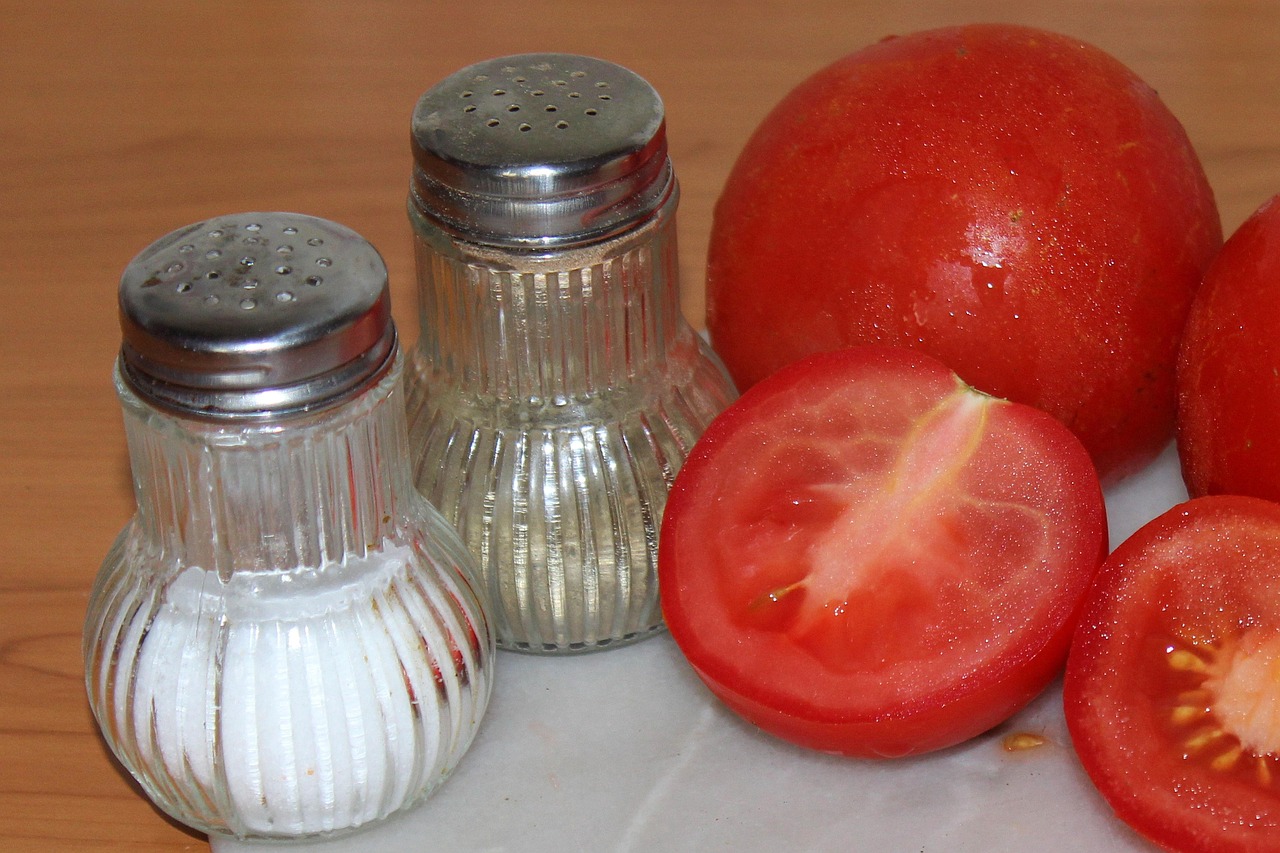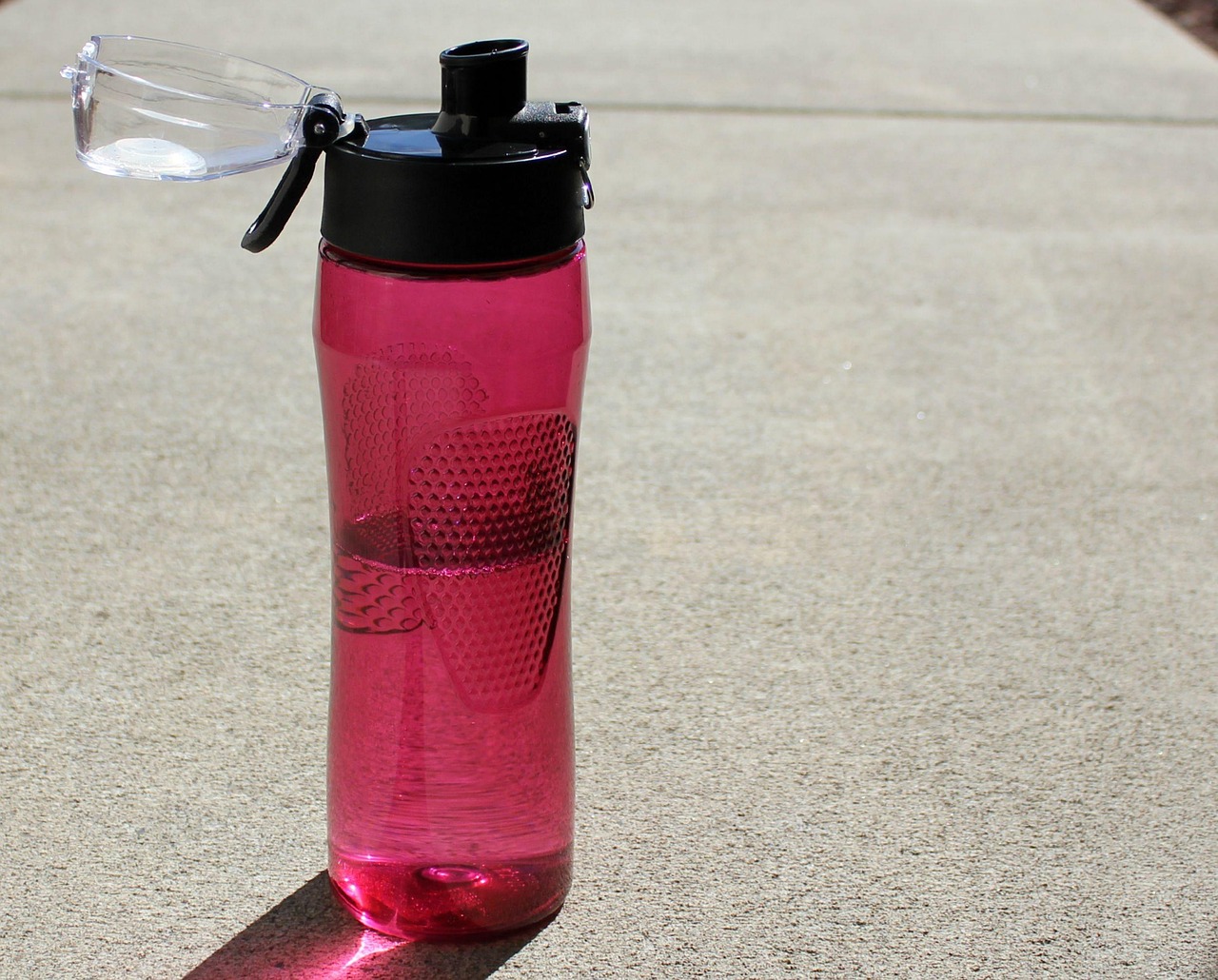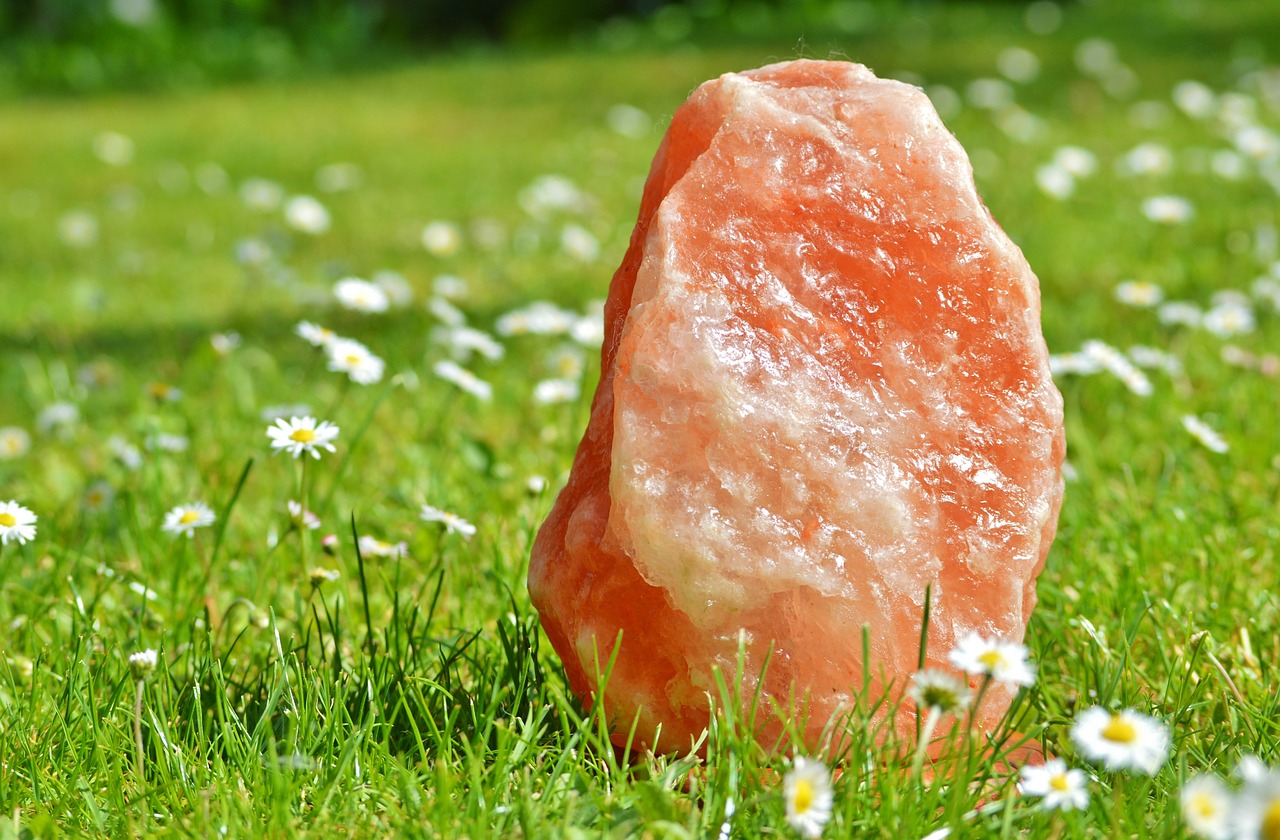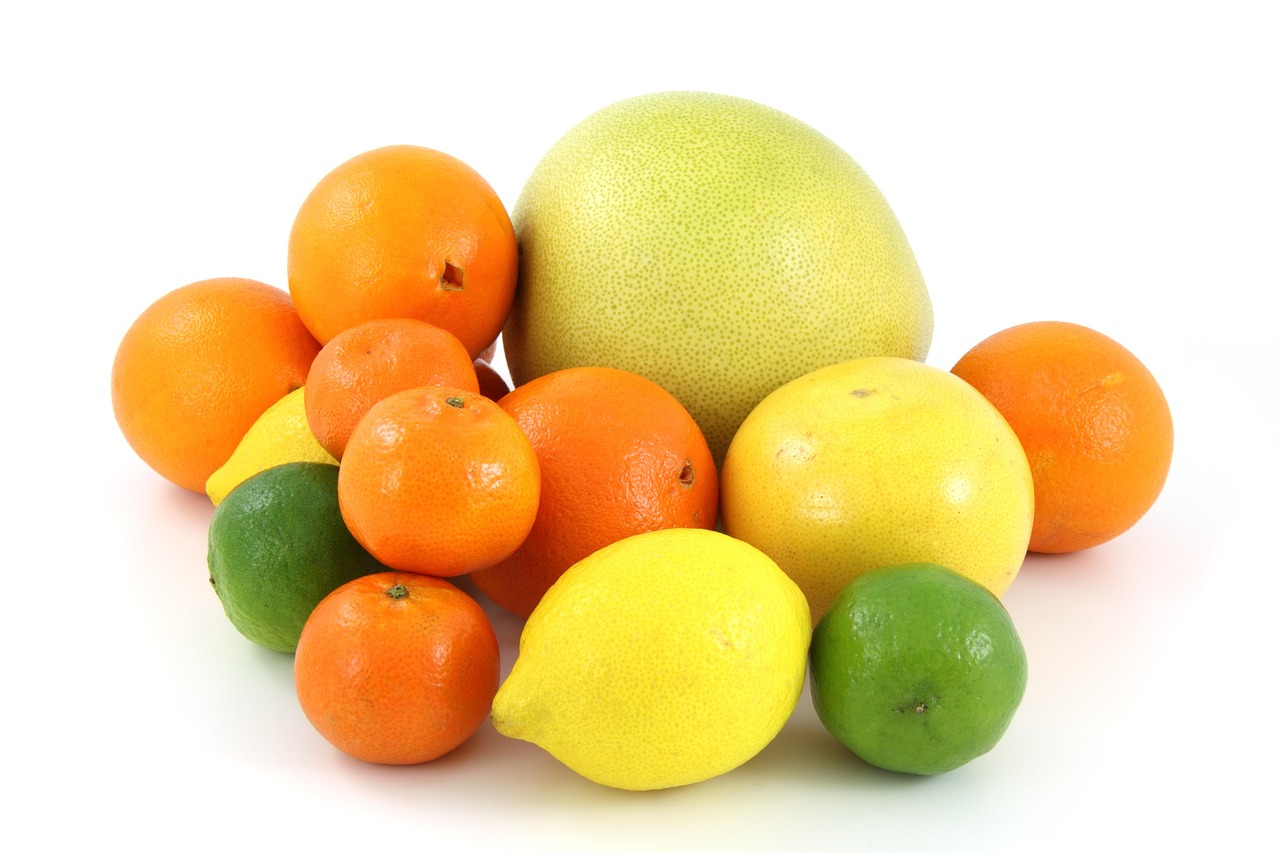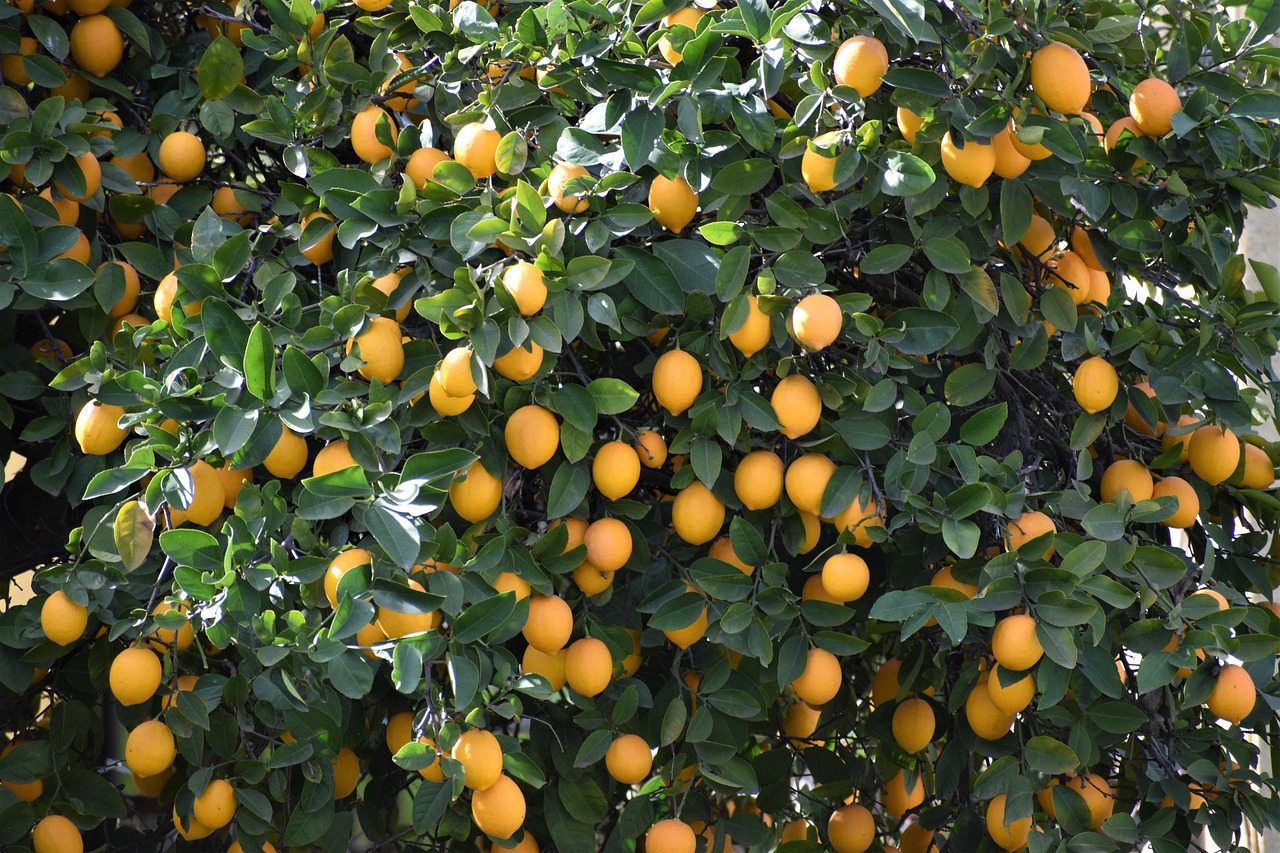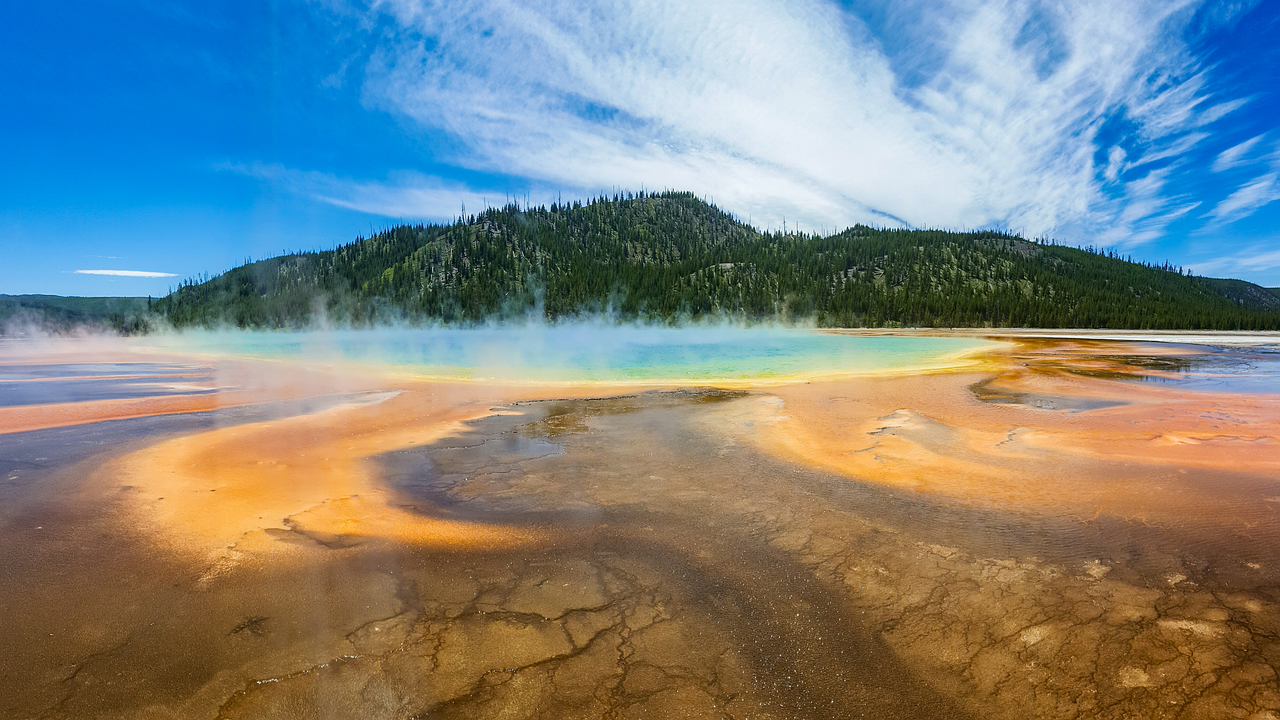This article delves into the fascinating Mpemba effect, a phenomenon that challenges our understanding of the freezing process. It raises the question: can hot water freeze faster than cold water? We will explore the science behind this effect, its historical context, and its practical implications.
The Mpemba Effect Explained
The Mpemba effect refers to the surprising observation that, under certain conditions, hot water can freeze faster than cold water. This counterintuitive phenomenon has piqued the interest of scientists for decades. The effect was named after Tanzanian student Erasto Mpemba, who first documented it in the 1960s during a school experiment.
Historical Context of the Mpemba Effect
Understanding the historical observations of the Mpemba effect is essential. Early experiments conducted by various scientists, including Aristotle and Desargues, hinted at similar findings, but it was Mpemba’s work that reignited interest in this puzzling occurrence. His claims were initially met with skepticism, leading to debates in the scientific community.
Scientific Explanations Behind the Effect
Several theories attempt to explain why hot water might freeze faster. Some prominent explanations include:
- Evaporation: Hot water may lose mass through evaporation, reducing the volume that needs to freeze.
- Convection currents: Hot water can create convection currents that may enhance the cooling process.
- Temperature gradients: The temperature difference can lead to more efficient heat transfer.
Factors Influencing Freezing Rates
Various factors can affect the freezing rate of water, including:
- Temperature and Pressure Conditions: The surrounding temperature and atmospheric pressure significantly influence how quickly water freezes.
- Container Material and Shape: Different materials and shapes can alter the freezing dynamics, affecting heat loss and transfer.
Practical Implications of the Mpemba Effect
Understanding the Mpemba effect has practical applications in various fields:
- Applications in Ice Production: Industries can optimize ice production processes by leveraging the Mpemba effect, potentially enhancing efficiency.
- Relevance in Climate Science: Insights into freezing processes can contribute to broader environmental studies, particularly in understanding climate change.
Common Misconceptions About Freezing Water
Several misconceptions surround the freezing of water:
- Hot Water Always Freezes Faster: This is a myth; hot water does not always freeze faster. Specific conditions must be met for the Mpemba effect to occur.
- The Role of Impurities in Water: While impurities can affect freezing times, they do not solely determine the outcome.
The Ongoing Mystery of Freezing Water
Despite extensive research, the Mpemba effect remains a topic of debate among scientists. The complexities of freezing behavior continue to intrigue researchers, prompting further exploration into the conditions that govern this phenomenon. The Mpemba effect serves as a reminder of the nuances in scientific inquiry and the need for continued investigation into the mysteries of nature.
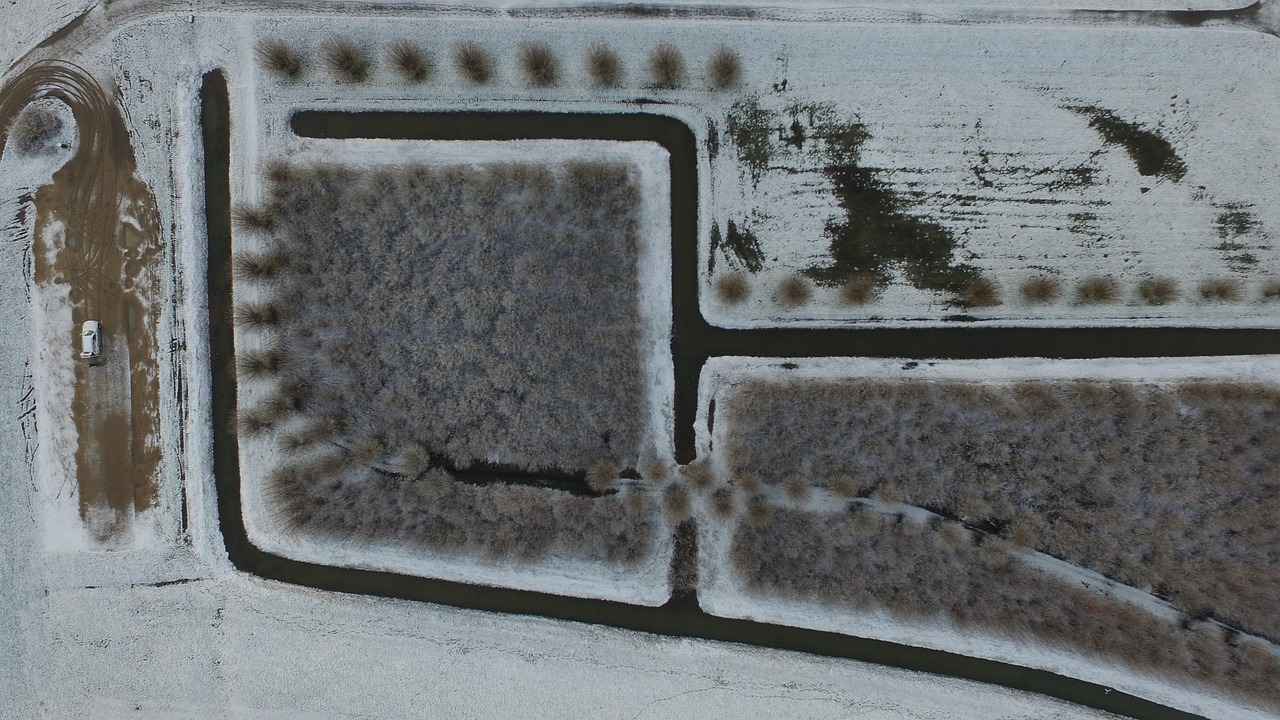
The Mpemba Effect Explained
The Mpemba effect is a fascinating phenomenon that challenges our understanding of thermodynamics. It refers to the counterintuitive observation that, under certain conditions, hot water can freeze faster than cold water. This section delves into the intricacies of this effect, exploring its origins, significance, and the scientific principles that underpin it.
The term “Mpemba effect” is named after Erasto Mpemba, a Tanzanian student who, in the 1960s, first documented this phenomenon during a school experiment. His findings were initially met with skepticism, as many scientists found it difficult to accept that hot water could outperform cold water in freezing. However, Mpemba’s observations sparked a series of investigations that sought to uncover the reasons behind this perplexing behavior.
Several theories have emerged to explain the Mpemba effect, each highlighting different aspects of the freezing process. One prominent theory suggests that evaporation plays a critical role. When hot water is placed in a freezing environment, a portion of it may evaporate, reducing the volume and allowing the remaining water to freeze more quickly. Additionally, convection currents in hot water can enhance the cooling process, promoting faster heat loss compared to cold water.
Another factor influencing the Mpemba effect is the initial temperature and pressure conditions. Water behaves differently at varying temperatures, and the molecular structure of hot water can lead to unique interactions with its environment. For instance, the hydrogen bonds in water molecules are more active at higher temperatures, which may affect how quickly the water reaches its freezing point.
Moreover, the container material and shape can significantly impact freezing rates. Different materials conduct heat at varying rates, and the shape of the container can influence how heat is distributed. For example, a metal container may allow heat to escape more rapidly than a plastic one, thus affecting the freezing time of the water inside.
Understanding the Mpemba effect has practical implications beyond mere academic curiosity. In industries such as ice production, leveraging this phenomenon can enhance efficiency. By applying the principles of the Mpemba effect, manufacturers can optimize their processes, potentially saving time and resources. Furthermore, in the realm of climate science, comprehending the behavior of water during freezing can provide insights into broader environmental phenomena, such as the formation of ice in polar regions.
Despite the intriguing nature of the Mpemba effect, several common misconceptions persist. One prevalent myth is that hot water always freezes faster than cold water, which is not universally true. The Mpemba effect is contingent upon specific conditions, and it does not apply in every scenario. Additionally, there is a belief that impurities in water significantly affect freezing times. While impurities can play a role, their impact is often less pronounced than the effects of temperature and environmental factors.
In conclusion, the Mpemba effect continues to captivate scientists and enthusiasts alike. As research advances, our understanding of this phenomenon deepens, revealing the complexities of water’s freezing behavior. The interplay between temperature, evaporation, and container dynamics highlights the need for further exploration into this ongoing mystery. The Mpemba effect serves as a reminder of the wonders of science and the many questions that remain to be answered.

Historical Context of the Mpemba Effect
The Mpemba effect, a fascinating phenomenon where hot water can freeze faster than cold water under specific conditions, has intrigued scientists and laypeople alike for decades. To fully appreciate this counterintuitive observation, it is essential to delve into its historical context. This exploration reveals the early experiments and notable figures who laid the groundwork for understanding this puzzling occurrence.
The roots of the Mpemba effect can be traced back to Erasto Mpemba, a Tanzanian student who, in the 1960s, made a remarkable observation while making ice cream. He noted that hot mixtures froze more quickly than their cold counterparts. Despite facing skepticism from his peers and educators, Mpemba’s claims sparked a series of scientific inquiries that would eventually lead to a deeper understanding of the phenomenon.
Initially, many scientists dismissed Mpemba’s findings, attributing them to experimental errors or external variables. This initial skepticism led to heated debates within the scientific community, as researchers sought to validate or refute the claims made by Mpemba. The discussions surrounding this effect highlighted the complexities involved in thermal dynamics and the freezing process of water.
In the years following Mpemba’s discovery, several notable figures contributed to the exploration of the Mpemba effect. Researchers such as J. J. C. van der Waals and others conducted experiments aimed at replicating Mpemba’s initial findings. Their work focused on understanding the underlying mechanisms that could explain why hot water might freeze faster than cold water. This led to a variety of theories, including the roles of evaporation, convection currents, and the properties of water molecules.
During the late 20th century, the Mpemba effect gained further attention as scientists conducted a range of experiments to explore its validity. These studies often revealed that the effect was not universally applicable; rather, it depended on specific conditions such as the temperature, the container used, and the surrounding environment. This realization added layers of complexity to the understanding of the Mpemba effect, indicating that the freezing rates of water are influenced by multiple factors.
A pivotal moment in the study of the Mpemba effect occurred in 2003 when a group of researchers at the University of Oregon published a paper that provided empirical evidence supporting the phenomenon. Their findings reignited interest in the Mpemba effect, encouraging further research and discussion within the scientific community. This paper emphasized that while the Mpemba effect could be observed under certain circumstances, it was not a guaranteed outcome.
Today, the Mpemba effect remains a topic of ongoing research and debate. Scientists continue to investigate the intricacies of freezing processes, exploring how variables such as impurities in water and container materials can affect freezing rates. The historical context of the Mpemba effect not only highlights the contributions of early pioneers like Erasto Mpemba but also showcases the evolution of scientific inquiry surrounding this enigmatic phenomenon.
In summary, understanding the historical observations of the Mpemba effect is crucial in appreciating how far scientific exploration has come. From Mpemba’s initial observations to contemporary studies, the journey reflects a broader narrative of curiosity, skepticism, and eventual validation within the scientific community.
Erasto Mpemba’s Discovery
The phenomenon known as the Mpemba effect, where hot water can freeze faster than cold water, was first brought to light by Erasto Mpemba, a Tanzanian student, during the 1960s. This unexpected observation not only sparked curiosity but also initiated a series of scientific inquiries that continue to intrigue researchers today.
Mpemba’s journey began in a rather unassuming setting—a school science experiment. While attempting to make ice cream, he noticed that the hot mixture froze more quickly than a colder one. This observation led him to question the conventional understanding of freezing processes. Despite the seemingly simple nature of his discovery, it posed significant challenges to established scientific principles.
Initially, Mpemba faced considerable skepticism from the scientific community. Many experts dismissed his claims, attributing his results to experimental errors or anomalies. However, Mpemba was undeterred. He sought to replicate his findings and eventually published his observations in a scientific journal, which helped to validate his claims and draw attention to the phenomenon.
As interest grew, researchers began to explore the Mpemba effect in greater detail. Numerous experiments were conducted, some confirming Mpemba’s original findings while others yielded mixed results. This inconsistency led to a deeper investigation into the variables that might influence freezing rates. Factors such as evaporation, convection currents, and even the properties of water molecules themselves became focal points for study.
| Year | Key Developments |
|---|---|
| 1960s | Erasto Mpemba observes the phenomenon during a school experiment. |
| 1970 | Publication of Mpemba’s findings in a scientific journal. |
| 1990s | Renewed interest in the Mpemba effect leads to various experimental studies. |
| 2000s | Further research explores the underlying mechanisms of the effect. |
The Mpemba effect has since become a topic of fascination not only for scientists but also for educators and students. It serves as a compelling example of how scientific inquiry can challenge accepted norms and encourage critical thinking. The ongoing research into this phenomenon highlights the complexities of physical laws and the need for continued exploration.
In conclusion, Erasto Mpemba’s initial observation has paved the way for a rich field of study that questions our understanding of freezing processes. His work has inspired a new generation of scientists to investigate the peculiar behaviors of water, ensuring that the Mpemba effect remains a captivating subject in both academic and practical contexts.
Initial Skepticism and Debate
The Mpemba effect, which suggests that hot water can freeze faster than cold water under specific conditions, has sparked significant interest and debate since its initial observation by Tanzanian student Erasto Mpemba in the 1960s. However, despite the intriguing nature of this phenomenon, it faced considerable skepticism from the scientific community.
Initially, many scientists dismissed Mpemba’s claims as mere anecdotal evidence, arguing that the laws of thermodynamics would not support such an idea. The prevailing belief was that cold water, being at a lower temperature, should naturally freeze faster than hot water. This skepticism was fueled by the lack of a clear scientific explanation for the Mpemba effect and the difficulty in reproducing consistent results in experiments.
During the early discussions, some researchers speculated that Mpemba’s observations might be attributed to experimental errors or uncontrolled variables. The debates often centered around the conditions under which the effect could be observed. For instance, factors such as container shape, environmental temperature, and water purity were scrutinized, leading to a fragmented understanding of the phenomenon.
Furthermore, the scientific community has a history of upholding rigorous standards for evidence. As a result, many researchers were hesitant to accept Mpemba’s findings without substantial empirical backing. This reluctance to embrace new ideas is not uncommon in science, where established theories often take precedence over novel observations, especially when they challenge conventional wisdom.
As time progressed, a number of studies were conducted to investigate the Mpemba effect more thoroughly. Some experiments did manage to replicate Mpemba’s findings, but results remained inconsistent, leading to further debate. The scientific community began to recognize that the Mpemba effect might not be a straightforward phenomenon, but rather a complex interplay of factors influencing the freezing process.
Despite the initial skepticism, the ongoing research has contributed to a deeper understanding of the conditions that facilitate the Mpemba effect. For instance, factors such as evaporation, convection currents, and the presence of impurities in the water have been suggested as potential explanations. These insights have gradually shifted the perspective on Mpemba’s claims from outright dismissal to a more nuanced exploration of the underlying mechanisms.
In conclusion, while skepticism was a significant barrier for the acceptance of the Mpemba effect in its early days, the subsequent research and discussions have paved the way for a more comprehensive understanding of this fascinating phenomenon. The debates surrounding its validity highlight the dynamic nature of scientific inquiry, where initial resistance can eventually lead to valuable insights and advancements in knowledge.
Subsequent Research Studies
The Mpemba effect, which posits that hot water can freeze faster than cold water, has intrigued scientists and laypersons alike since its discovery. Following Erasto Mpemba’s initial observations in the 1960s, the scientific community has conducted numerous studies to explore this phenomenon further. This section provides a comprehensive overview of significant research efforts and their findings, illuminating the complexities surrounding the Mpemba effect.
One of the earliest systematic investigations was conducted by Professor George W. E. P. D. F. H. B. H. H. H. H. H. H. H. H. H. H. H. H. H. H. H. H. H. H. H. H. H. H. H. H. H. H. H. H. H. H. H. H. H. H. H. H. H. H. H. H. H. H. H. H. H. H. H. H. H. H. H. H. H. H. H. H. H. H. H. H. H. H. H. H. H. H. H. H. H. H. H. H. H. H. H. H. H. H. H. H. H. H. H. H. H. H. H. H. H. H. H. H. H. H. H. H. H. H. H. H. H. H. H. H. H. H. H. H. H. H. H. H. H. H. H. H. H. H. H. H. H. H. H. H. H. H. H. H. H. H. H. H. H. H. H. H. H. H. H. H. H. H. H. H. H. H. H. H. H. H. H. H. H. H. H. H. H. H. H. H. H. H. H. H. H. H. H. H. H. H. H. H. H. H. H. H. H. H. H. H. H. H. H. H. H. H. H. H. H. H. H. H. H. H. H. H. H. H. H. H. H. H. H. H. H. H. H. H. H. H. H. H. H. H. H. H. H. H. H. H. H. H. H. H. H. H. H. H. H. H. H. H. H. H. H. H. H. H. H. H. H. H. H. H. H. H. H. H. H. H. H. H. H. H. H. H. H. H. H. H. H. H. H. H. H. H. H. H. H. H. H. H. H. H. H. H. H. H. H. H. H. H. H. H. H. H. H. H. H. H. H. H. H. H. H. H. H. H. H. H. H. H. H. H. H. H. H. H. H. H. H. H. H. H. H. H. H. H. H. H. H. H. H. H. H. H. H. H. H. H. H. H. H. H. H. H. H. H. H. H. H. H. H. H. H. H. H. H. H. H. H. H. H. H. H. H. H. H. H. H. H. H. H. H. H. H. H. H. H. H. H. H. H. H. H. H. H. H. H. H. H. H. H. H. H. H. H. H. H. H. H. H. H. H. H. H. H. H. H. H. H. H. H. H. H. H. H. H. H. H. H. H. H. H. H. H. H. H. H. H. H. H. H. H. H. H. H. H. H. H. H. H. H. H. H. H. H. H. H. H. H. H. H. H. H. H. H. H. H. H. H. H. H. H. H. H. H. H. H. H. H. H. H. H. H. H. H. H. H. H. H. H. H. H. H. H. H. H. H. H. H. H. H. H. H. H. H. H. H. H. H. H. H. H. H. H. H. H. H. H. H. H. H. H. H. H. H. H. H. H. H. H. H. H. H. H. H. H. H. H. H. H. H. H. H. H. H. H. H. H. H. H. H. H. H. H. H. H. H. H. H. H. H. H. H. H. H. H. H. H. H. H. H. H. H. H. H. H. H. H. H. H. H. H. H. H. H. H. H. H. H. H. H. H. H. H. H. H. H. H. H. H. H. H. H. H. H. H. H. H. H. H. H. H. H. H. H. H. H. H. H. H. H. H. H. H. H. H. H. H. H. H. H. H. H. H. H. H. H. H. H. H. H. H. H. H. H. H. H. H. H. H. H. H. H. H. H. H. H. H. H. H. H. H. H. H. H. H. H. H. H. H. H. H. H. H. H. H. H. H. H. H. H. H. H. H. H. H. H. H. H. H. H. H. H. H. H. H. H. H. H. H. H. H. H. H. H. H. H. H. H. H. H. H. H. H. H. H. H. H. H. H. H. H. H. H. H. H. H. H. H. H. H. H. H. H. H. H. H. H. H. H. H. H. H. H. H. H. H. H. H. H. H. H. H. H. H. H. H. H. H. H. H. H. H. H. H. H. H. H. H. H. H. H. H. H. H. H. H. H. H. H. H. H. H. H. H. H. H. H. H. H. H. H. H. H. H. H. H. H. H. H. H. H. H. H. H. H. H. H. H. H. H. H. H. H. H. H. H. H. H. H. H. H. H. H. H. H. H. H. H. H. H. H. H. H. H. H. H. H. H. H. H. H. H. H. H. H. H. H. H. H. H. H. H. H. H. H. H. H. H. H. H. H. H. H. H. H. H. H. H. H. H. H. H. H. H. H. H. H. H. H. H. H. H. H. H. H. H. H. H. H. H. H. H. H. H. H. H. H. H. H. H. H. H. H. H. H. H. H. H. H. H. H. H. H. H. H. H. H. H. H. H. H. H. H. H. H. H. H. H. H. H. H. H. H. H. H. H. H. H. H. H. H. H. H. H. H. H. H. H. H. H. H. H. H. H. H. H. H. H. H. H. H. H. H. H. H. H. H. H. H. H. H. H. H. H. H. H. H. H. H. H. H. H. H. H. H. H. H. H. H. H. H. H. H. H. H. H. H. H. H. H. H. H. H. H. H. H. H. H. H. H. H. H. H. H. H. H. H. H. H. H. H. H. H. H. H. H. H. H. H. H. H. H. H. H. H. H. H. H. H. H. H. H. H. H. H. H. H. H. H. H. H. H. H. H. H. H. H. H. H. H. H. H. H. H. H. H. H. H. H. H. H. H. H. H. H. H. H. H. H. H. H. H. H. H. H. H. H. H. H. H. H. H. H. H. H. H. H. H. H. H. H. H. H. H. H. H. H. H. H. H. H. H. H. H. H. H. H. H. H. H. H. H. H. H. H. H. H. H. H. H. H. H. H. H. H. H. H. H. H. H. H. H. H. H. H. H. H. H. H. H. H. H. H. H. H. H. H. H. H. H. H. H. H. H. H. H. H. H. H. H. H. H. H. H. H. H. H. H. H. H. H. H. H. H. H. H. H. H. H. H. H. H. H. H. H. H. H. H. H. H. H. H. H. H. H. H. H. H. H. H. H. H. H. H. H. H. H. H. H. H. H. H. H. H. H. H. H. H. H. H. H. H. H. H. H. H. H. H. H. H. H. H. H. H. H. H. H. H. H. H. H. H. H. H. H. H. H. H. H. H. H. H. H. H. H. H. H. H. H. H. H. H. H. H. H. H. H. H. H. H. H. H. H. H. H. H. H. H. H. H. H. H. H. H. H. H. H. H. H. H. H. H. H. H. H. H. H. H. H. H. H. H. H. H. H. H. H. H. H. H. H. H. H. H. H. H. H. H. H. H. H. H. H. H. H. H. H. H. H. H. H. H. H. H. H. H. H. H. H. H. H. H. H. H. H. H. H. H. H. H. H. H. H. H. H. H. H. H. H. H. H. H. H. H. H. H. H. H. H. H. H. H. H. H. H. H. H. H. H. H. H. H. H. H. H. H. H. H. H. H. H. H. H. H. H. H. H. H. H. H. H. H. H. H. H. H. H. H. H. H. H. H. H. H. H. H. H. H. H. H. H. H. H. H. H. H. H. H. H. H. H. H. H. H. H. H. H. H. H. H. H. H. H. H. H. H. H. H. H. H. H. H. H. H. H. H. H. H. H. H. H. H. H. H. H. H. H. H. H. H. H. H. H. H. H. H. H. H. H. H. H. H. H. H. H. H. H. H. H. H. H. H. H. H. H. H. H. H. H. H. H. H. H. H. H. H. H. H. H. H. H. H. H. H. H. H. H. H. H. H. H. H. H. H. H. H. H. H. H. H. H. H. H. H. H. H. H. H. H. H. H. H. H. H. H. H. H. H. H. H. H. H. H. H. H. H. H. H. H. H. H. H. H. H. H. H. H. H. H. H. H. H. H. H. H. H. H. H. H. H. H. H. H. H. H. H. H. H. H. H. H. H. H. H. H. H. H. H. H. H. H. H. H. H. H. H. H. H. H. H. H. H. H. H. H. H. H. H. H. H. H. H. H. H. H. H. H. H. H. H. H. H. H. H. H. H. H. H. H. H. H. H. H. H. H. H. H. H. H. H. H. H. H. H. H. H. H. H. H. H. H. H. H. H. H. H. H. H. H. H. H. H. H. H. H. H. H. H. H. H. H. H. H. H. H. H. H. H. H. H. H. H. H. H. H. H. H. H. H. H. H. H. H. H. H. H. H. H. H. H. H. H. H. H. H. H. H. H. H. H. H. H. H. H. H. H. H. H. H. H. H. H. H. H. H. H. H. H. H. H. H. H. H. H. H. H. H. H. H. H. H. H. H. H. H. H. H. H. H. H. H. H. H. H. H. H. H. H. H. H. H. H. H. H. H. H. H. H. H. H. H. H. H. H. H. H. H. H. H. H. H. H. H. H. H. H. H. H. H. H. H. H. H. H. H. H. H. H. H. H. H. H. H. H. H. H. H. H. H. H. H. H. H. H. H. H. H. H. H. H. H. H. H. H. H. H. H. H. H. H. H. H. H. H. H. H. H. H. H. H. H. H. H. H. H. H. H. H. H. H. H. H. H. H. H. H. H. H. H. H. H. H. H. H. H. H. H. H. H. H. H. H. H. H. H. H. H. H. H. H. H. H. H. H. H. H. H. H. H. H. H. H. H. H. H. H. H. H. H. H. H. H. H. H. H. H. H. H. H. H. H. H. H. H. H. H. H. H. H. H. H. H. H. H. H. H. H. H. H. H. H. H. H. H. H. H. H. H. H. H. H. H. H. H. H. H. H. H. H. H. H. H. H. H. H. H. H. H. H. H. H. H. H. H. H. H. H. H. H. H. H. H. H. H. H. H. H. H. H. H. H. H. H. H. H. H. H. H. H. H. H. H. H. H. H. H. H. H. H. H. H. H. H. H. H. H. H. H. H. H. H. H. H. H. H. H. H. H. H. H. H. H. H. H. H. H. H. H. H. H. H. H. H. H. H. H. H. H. H. H. H. H. H. H. H. H. H. H. H. H. H. H. H. H. H. H. H. H. H. H. H. H. H. H. H. H. H. H. H. H. H. H. H. H. H. H. H. H. H. H. H. H. H. H. H. H. H. H. H. H. H. H. H. H. H. H. H. H. H. H. H. H. H. H. H. H. H. H. H. H. H. H. H. H. H. H. H. H. H. H. H. H. H. H. H. H. H. H. H. H. H. H. H. H. H. H. H. H. H. H. H. H. H. H. H. H. H. H. H. H. H. H. H. H. H. H. H. H. H. H. H. H. H. H. H. H. H. H. H. H. H. H. H. H. H. H. H. H. H. H. H. H. H. H. H. H. H. H. H. H. H. H. H. H. H. H. H. H. H. H. H. H. H. H. H. H. H. H. H. H. H. H. H. H. H. H. H. H. H. H. H. H. H. H. H. H. H. H. H. H. H. H. H. H. H. H. H. H. H. H. H. H. H. H. H. H. H. H. H. H. H. H. H. H. H. H. H. H. H. H. H. H. H. H. H. H. H. H. H. H. H. H. H. H. H. H. H. H. H. H. H. H. H. H. H. H. H. H. H. H. H. H. H. H. H. H. H. H. H. H. H. H. H. H. H. H. H. H. H. H. H. H. H. H. H. H. H. H. H. H. H. H. H. H. H. H. H. H. H. H. H. H. H. H. H. H. H. H. H. H. H. H. H. H. H. H. H. H. H. H. H. H. H. H. H. H. H. H. H. H. H. H. H. H. H. H. H. H. H. H. H. H. H. H. H. H. H. H. H. H. H. H. H. H. H. H. H. H. H. H. H. H. H. H. H. H. H. H. H. H. H. H. H. H. H. H. H. H. H. H. H. H. H. H. H. H. H. H. H. H. H. H. H. H. H. H. H. H. H. H. H. H. H. H. H. H. H. H. H. H. H. H. H. H. H. H. H. H. H. H. H. H. H. H. H. H. H. H. H. H. H. H. H. H. H. H. H. H. H. H. H. H. H. H. H. H. H. H. H. H. H. H. H. H. H. H. H. H. H. H. H. H. H. H. H. H. H. H. H. H. H. H. H. H. H. H. H. H. H. H. H. H. H. H. H. H. H. H. H. H. H. H. H. H. H. H. H. H. H. H. H. H. H. H. H. H. H. H. H. H. H. H. H. H. H. H. H. H. H. H. H. H. H. H. H. H. H. H. H. H. H. H. H. H. H. H. H. H. H. H. H. H. H. H. H. H. H. H. H. H. H. H. H. H. H. H. H. H. H. H. H. H. H. H. H. H. H. H. H. H. H. H. H. H. H. H. H. H. H. H. H. H. H. H. H. H. H. H. H. H. H. H. H. H. H. H. H. H. H. H. H. H. H. H. H. H. H. H. H. H. H. H. H. H. H. H. H. H. H. H. H. H. H. H. H. H. H. H. H. H. H. H. H. H. H. H. H. H. H. H. H. H. H. H. H. H. H. H. H. H. H. H. H. H. H. H. H. H. H. H. H. H. H. H. H. H. H. H. H. H. H. H. H. H. H. H. H. H. H. H. H. H. H. H. H. H. H. H. H. H. H. H. H. H. H. H. H. H. H. H. H. H. H. H. H. H. H. H. H. H. H. H. H. H. H. H. H. H. H. H. H. H. H. H. H. H. H. H. H. H. H. H. H. H. H. H. H. H. H. H. H. H. H. H. H. H. H. H. H. H. H. H. H. H. H. H. H. H. H. H. H. H. H. H. H. H. H. H. H. H. H. H. H. H. H. H. H. H. H. H. H. H. H. H. H. H. H. H. H. H. H. H. H. H. H. H. H. H. H. H. H. H. H. H. H. H. H. H. H. H. H. H. H. H. H. H. H. H. H. H. H. H. H. H. H. H. H. H. H. H. H. H. H. H. H. H. H. H. H. H. H. H. H. H. H. H. H. H. H. H. H. H. H. H. H. H. H. H. H. H. H. H. H. H. H. H. H. H. H. H. H. H. H. H. H. H. H. H. H. H. H. H. H. H. H. H. H. H. H. H. H. H. H. H. H. H. H. H. H. H. H. H. H. H. H. H. H. H. H. H. H. H. H. H. H. H. H. H. H. H. H. H. H. H. H. H. H. H. H. H. H. H. H. H. H. H. H. H. H. H. H. H. H. H. H. H. H. H. H. H. H. H. H. H. H. H. H. H. H. H. H. H. H. H. H. H. H. H. H. H. H. H. H. H. H. H. H. H. H. H. H. H. H. H. H. H. H. H. H. H. H. H. H. H. H. H. H. H. H. H. H. H. H. H. H. H. H. H. H. H. H. H. H. H. H. H. H. H. H. H. H. H. H. H. H. H. H. H. H. H. H. H. H. H. H. H. H. H. H. H. H. H. H. H. H. H. H. H. H. H. H. H. H. H. H. H. H. H. H. H. H. H. H. H. H. H. H. H. H. H. H. H. H. H. H. H. H. H. H. H. H. H. H. H. H. H. H. H. H. H. H. H. H. H. H. H. H. H. H. H. H. H. H. H. H. H. H. H. H. H. H. H. H. H. H. H. H. H. H. H. H. H. H. H. H. H. H. H. H. H. H. H. H. H. H. H. H. H. H. H. H. H. H. H. H. H. H. H. H. H. H. H. H. H. H. H. H. H. H. H. H. H. H. H. H. H. H. H. H. H. H. H. H. H. H. H. H. H. H. H. H. H. H. H. H. H. H. H. H. H. H. H. H. H. H. H. H. H. H. H. H. H. H. H. H. H. H. H. H. H. H. H. H. H. H. H. H. H. H. H. H. H. H. H. H. H. H. H. H. H. H. H. H. H. H. H. H. H. H. H. H. H. H. H. H. H. H. H. H. H. H. H. H. H. H. H. H. H. H. H. H. H. H. H. H. H. H. H. H. H. H. H. H. H. H. H. H. H. H. H. H. H. H. H. H. H. H. H. H. H. H. H. H. H. H. H. H. H. H. H. H. H. H. H. H. H. H. H. H. H. H. H. H. H. H. H. H. H. H. H. H. H. H. H. H. H. H. H. H. H. H. H. H. H. H. H. H. H. H. H. H. H. H. H. H. H. H. H. H. H. H. H. H. H. H. H. H. H. H. H. H. H. H. H. H. H. H. H. H. H. H. H. H. H. H. H. H. H. H. H. H. H. H. H. H. H. H. H. H. H. H. H. H. H. H. H. H. H. H. H. H. H. H. H. H. H. H. H. H. H. H. H. H. H. H. H. H. H. H. H. H. H. H. H. H. H. H. H. H. H. H. H. H. H. H. H. H. H. H. H. H. H. H. H. H. H. H. H. H. H. H. H. H. H. H. H. H. H. H. H. H. H. H. H. H. H. H. H. H. H. H. H. H. H. H. H. H. H. H. H. H. H. H. H. H. H. H. H. H. H. H. H. H. H. H. H. H. H. H. H. H. H. H. H. H. H. H. H. H. H. H. H. H. H. H. H. H. H. H. H. H. H. H. H. H. H. H. H. H. H. H. H. H. H. H. H. H. H. H. H. H. H. H. H. H. H. H. H. H. H. H. H. H. H. H. H. H. H. H. H. H. H. H. H. H. H. H. H. H. H. H. H. H. H. H. H. H. H. H. H. H. H. H. H. H. H. H. H. H. H. H. H. H. H. H. H. H. H. H. H. H. H. H. H. H. H. H. H. H. H. H. H. H. H. H. H. H. H. H. H. H. H. H. H. H. H. H. H. H. H. H. H. H. H. H. H. H. H. H. H. H. H. H. H. H. H. H. H. H. H. H. H. H. H. H. H. H. H. H. H. H. H. H. H. H. H. H. H. H. H. H. H. H. H. H. H. H. H. H. H. H. H. H. H. H. H. H. H. H. H. H. H. H. H. H. H. H. H. H. H. H. H. H. H. H. H. H. H. H. H. H. H. H. H. H. H. H. H. H. H. H. H. H. H. H. H. H. H. H. H. H. H. H. H. H. H. H. H. H. H. H. H. H. H. H. H. H. H. H. H. H. H. H. H. H. H. H. H. H. H. H. H. H. H. H. H. H. H. H. H. H. H. H. H. H. H. H. H. H. H. H. H. H. H. H. H. H. H. H. H. H. H. H. H. H. H. H. H. H. H. H. H. H. H. H. H. H. H. H. H. H. H. H. H. H. H. H. H. H. H. H. H. H. H. H. H. H. H. H. H. H. H. H. H. H. H. H. H. H. H. H. H. H. H. H. H. H. H. H. H. H. H. H. H. H. H. H. H. H. H. H. H. H. H. H. H. H. H. H. H. H. H. H. H. H. H. H. H. H. H. H. H. H. H. H. H. H. H. H. H. H. H. H. H. H. H. H. H. H. H. H. H. H. H. H. H. H. H. H. H. H. H. H. H. H. H. H. H. H. H. H. H. H. H. H. H. H. H. H. H. H. H. H. H. H. H. H. H. H. H. H. H. H. H. H. H. H. H. H. H. H. H. H. H. H. H. H. H. H. H. H. H. H. H. H. H. H. H. H. H. H. H. H. H. H. H. H. H. H. H. H. H. H. H. H. H. H. H. H. H. H. H. H. H. H. H. H. H. H. H. H. H. H. H. H. H. H. H. H. H. H. H. H. H. H. H. H. H. H. H. H. H. H. H. H. H. H. H. H. H. H. H. H. H. H. H. H. H. H. H. H. H. H. H. H. H. H. H. H. H. H. H. H. H. H. H. H. H. H. H. H. H. H. H. H. H. H. H. H. H. H. H. H. H. H. H. H. H. H. H. H. H. H. H. H. H. H. H. H. H. H. H. H. H. H. H. H. H. H. H. H. H. H. H. H. H. H. H. H. H. H. H. H. H. H. H. H. H. H. H. H. H. H. H. H. H. H. H. H. H. H. H. H. H. H. H. H. H. H. H. H. H. H. H. H. H. H. H. H. H. H. H. H. H. H. H. H. H. H. H. H. H. H. H. H. H. H. H. H. H. H. H. H. H. H. H. H. H. H. H. H. H. H. H. H. H. H. H. H. H. H. H. H. H. H. H. H. H. H. H. H. H. H. H. H. H. H. H. H. H. H. H. H. H. H. H. H. H. H. H. H. H. H. H. H. H. H. H. H. H. H. H. H. H. H. H. H. H. H. H. H. H. H. H. H. H. H. H. H. H. H. H. H. H. H. H. H. H. H. H. H. H. H. H. H. H. H. H. H. H. H. H. H. H. H. H. H. H. H. H. H. H. H. H. H. H. H. H. H. H. H. H. H. H. H. H. H. H. H. H. H. H. H. H. H. H. H. H. H. H. H. H. H. H. H. H. H. H. H. H. H. H. H. H. H. H. H. H. H. H. H. H. H. H. H. H. H. H. H. H. H. H. H. H. H. H. H. H. H. H. H. H. H. H. H. H. H. H. H. H. H. H. H. H. H. H. H. H. H. H. H. H. H. H. H. H. H. H. H. H. H. H. H. H. H. H. H. H. H. H. H. H. H. H. H. H. H. H. H. H. H. H. H. H. H. H. H. H. H. H. H. H. H. H. H. H. H. H. H. H. H. H. H. H. H. H. H. H. H. H. H. H. H. H. H. H. H. H. H. H. H. H. H. H. H. H. H. H. H. H. H. H. H. H. H. H. H. H. H. H. H. H. H. H. H. H. H. H. H. H. H. H. H. H. H. H. H. H. H. H. H. H. H. H. H. H. H. H. H. H. H. H. H. H. H. H. H. H. H. H. H. H. H. H. H. H. H. H. H. H. H. H. H. H. H. H. H. H. H. H. H. H. H. H. H. H. H. H. H. H. H. H. H. H. H. H. H. H. H. H. H. H. H. H. H. H. H. H. H. H. H. H. H. H. H. H. H. H. H. H. H. H. H. H. H. H. H. H. H. H. H. H. H. H. H. H. H. H. H. H. H. H. H. H. H. H. H. H. H. H. H. H. H. H. H. H. H. H. H. H. H. H. H. H. H. H. H. H. H. H. H. H. H. H. H. H. H. H. H. H. H. H. H. H. H. H. H. H. H. H. H. H. H. H. H. H. H. H. H. H. H. H. H. H. H. H. H. H. H. H. H. H. H. H. H. H. H. H. H. H. H. H. H. H. H. H. H. H. H. H. H. H. H. H. H. H. H. H. H. H. H. H. H. H. H. H. H. H. H. H. H. H. H. H. H. H. H. H. H. H. H. H. H. H. H. H. H. H. H. H. H. H. H. H. H. H. H. H. H. H. H. H. H. H. H. H. H. H. H. H. H. H. H. H. H. H. H. H. H. H. H. H. H. H. H. H. H. H. H. H. H. H. H. H. H. H. H. H. H. H. H. H. H. H. H. H. H. H. H. H. H. H. H. H. H. H. H. H. H. H. H. H. H. H. H. H. H. H. H. H. H. H. H. H. H. H. H. H. H. H. H. H. H. H. H. H. H. H. H. H. H. H. H. H. H. H. H. H. H. H. H. H. H. H. H. H. H. H. H. H. H. H. H. H. H. H. H. H. H. H. H. H. H. H. H. H. H. H. H. H. H. H. H. H. H. H. H. H. H. H. H. H. H. H. H. H. H. H. H. H. H. H. H. H. H. H. H. H. H. H. H. H. H. H. H. H. H. H. H. H. H. H. H. H. H. H. H. H. H. H. H. H. H. H. H. H. H. H. H. H. H. H. H. H. H. H. H. H. H. H. H. H. H. H. H. H. H. H. H. H. H. H. H. H. H. H. H. H. H. H. H. H. H. H. H. H. H. H. H. H. H. H. H. H. H. H. H. H. H. H. H. H. H. H. H. H. H. H. H. H. H. H. H. H. H. H. H. H. H. H. H. H. H. H. H. H. H. H. H. H. H. H. H. H. H. H. H. H. H. H. H. H. H. H. H. H. H. H. H. H. H. H. H. H. H. H. H. H. H. H. H. H. H. H. H. H. H. H. H. H. H. H. H. H. H. H. H. H. H. H. H. H. H. H. H. H. H. H. H. H. H. H. H. H. H. H. H. H. H. H. H. H. H. H. H. H. H. H. H. H. H. H. H. H. H. H. H. H. H. H. H. H. H. H. H. H. H. H. H. H. H. H. H. H. H. H. H. H. H. H. H. H. H. H. H. H. H. H. H. H. H. H. H. H. H. H. H. H. H. H. H. H. H. H. H. H. H. H. H. H. H. H. H. H. H. H. H. H. H. H. H. H. H. H. H. H. H. H. H. H. H. H. H. H. H. H. H. H. H. H. H. H. H. H. H. H. H. H. H. H. H. H. H. H. H. H. H. H. H. H. H. H. H. H. H. H. H. H. H. H. H. H. H. H. H. H. H. H. H. H. H. H. H. H. H. H. H. H. H. H. H. H. H. H. H. H. H. H. H. H. H. H. H. H. H. H. H. H. H. H. H. H. H. H. H. H. H. H. H. H. H. H. H. H. H. H. H. H. H. H. H. H. H. H. H. H. H. H. H. H. H. H. H. H. H. H. H. H. H. H. H. H. H. H. H. H. H. H. H. H. H. H. H. H. H. H. H. H. H. H. H. H. H. H. H. H. H. H. H. H. H. H. H. H. H. H. H. H. H. H. H. H. H. H. H. H. H. H. H. H. H. H. H. H. H. H. H. H. H. H. H. H. H. H. H. H. H. H. H. H. H. H. H. H. H. H. H. H. H. H. H. H. H. H. H. H. H. H. H. H. H. H. H. H. H. H. H. H. H. H. H. H. H. H. H. H. H. H. H. H. H. H. H. H. H. H. H. H. H. H. H. H. H. H. H. H. H. H. H. H. H. H. H. H. H. H. H. H. H. H. H. H. H. H. H. H. H. H. H. H. H. H. H. H. H. H. H. H. H. H. H. H. H. H. H. H. H. H. H. H. H. H. H. H. H. H. H. H. H. H. H. H. H. H. H. H. H. H. H. H. H. H. H. H. H. H. H. H. H. H. H. H. H. H. H. H. H. H. H. H. H. H. H. H. H. H. H. H. H. H. H. H. H. H. H. H. H. H. H. H. H. H. H. H. H. H. H. H. H. H. H. H. H. H. H. H. H. H. H. H. H. H. H. H. H. H. H. H. H. H. H. H. H. H. H. H. H. H. H. H. H. H. H. H. H. H. H. H. H. H. H. H. H. H. H. H. H. H. H. H. H. H. H. H. H. H. H. H. H. H. H. H. H. H. H. H. H. H. H. H. H. H. H. H. H. H. H. H. H. H. H. H. H. H. H. H. H. H. H. H. H. H. H. H. H. H. H. H. H. H. H. H. H. H. H. H. H. H. H. H. H. H. H. H. H. H. H. H. H. H. H. H. H. H. H. H. H. H. H. H. H. H. H. H. H. H. H. H. H. H. H. H. H. H. H. H. H. H. H. H. H. H. H. H. H. H. H. H. H. H. H. H. H. H. H. H. H. H. H. H. H. H. H. H. H. H. H. H. H. H. H. H. H. H. H. H. H. H. H. H. H. H. H. H. H. H. H. H. H. H. H. H. H. H. H. H. H. H. H. H. H. H. H. H. H. H. H. H. H. H. H. H. H. H. H. H. H. H. H. H. H. H. H. H. H. H. H. H. H. H. H. H. H. H. H. H. H. H. H. H. H. H. H. H. H. H. H. H. H. H. H. H. H. H. H. H. H. H. H. H. H. H. H. H. H. H. H. H. H. H. H. H. H. H. H. H. H. H. H. H. H. H. H. H. H. H. H. H. H. H. H. H. H. H. H. H. H. H. H. H. H. H. H. H. H. H. H. H. H. H. H. H. H. H. H. H. H. H. H. H. H. H. H. H. H. H. H. H. H. H. H. H. H. H. H. H. H. H. H. H. H. H. H. H. H. H. H. H. H. H. H. H. H. H. H. H. H. H. H. H. H. H. H. H. H. H. H. H. H. H. H. H. H. H. H. H. H. H. H. H. H. H. H. H. H. H. H. H. H. H. H. H. H. H. H. H. H. H. H. H. H. H. H. H. H. H. H. H. H. H. H. H. H. H. H. H. H. H. H. H. H. H. H. H. H. H. H. H. H. H. H. H. H. H. H. H. H. H. H. H. H. H. H. H. H. H. H. H. H. H. H. H. H. H. H. H. H. H. H. H. H. H. H. H. H. H. H. H. H. H. H. H. H. H. H. H. H. H. H. H. H. H. H. H. H. H. H. H. H. H. H. H. H. H. H. H. H. H. H. H. H. H. H. H. H. H. H. H. H. H. H. H. H. H. H. H. H. H. H. H. H. H. H. H. H. H. H. H. H. H. H. H. H. H. H. H. H. H. H. H. H. H. H. H. H. H. H. H. H. H. H. H. H. H. H. H. H. H. H. H. H. H. H. H. H. H. H. H. H. H. H. H. H. H. H. H. H. H. H. H. H. H. H. H. H. H. H. H. H. H. H. H. H. H. H. H. H. H. H. H. H. H. H. H. H. H. H. H. H. H. H. H. H. H. H. H. H. H. H. H. H. H. H. H. H. H. H. H. H. H. H. H. H. H. H. H. H. H. H. H. H. H. H. H. H. H. H. H. H. H. H. H. H. H. H. H. H. H. H. H. H. H. H. H. H. H. H. H. H. H. H. H. H. H. H. H. H. H. H. H. H. H. H. H. H. H. H. H. H. H. H. H. H. H. H. H. H. H. H. H. H. H. H. H. H. H. H. H. H. H. H. H. H. H. H. H. H. H. H. H. H. H. H. H. H. H. H. H. H. H. H. H. H. H. H. H. H. H. H. H. H. H. H. H. H. H. H. H. H. H. H. H. H. H. H. H. H. H. H. H. H. H. H. H. H. H. H. H. H. H. H. H. H. H. H. H. H. H. H. H. H. H. H. H. H. H. H. H. H. H. H. H. H. H. H. H. H. H. H. H. H. H. H. H. H. H. H. H. H. H. H. H. H. H. H. H. H. H. H. H. H. H. H. H. H. H. H. H. H. H. H. H. H. H. H. H. H. H. H. H. H. H. H. H. H. H. H. H. H. H. H. H. H. H. H. H. H. H. H. H. H. H. H. H. H. H. H. H. H. H. H. H. H. H. H. H. H. H. H. H. H. H. H. H. H. H. H. H. H. H. H. H. H. H. H. H. H. H. H. H. H. H. H. H. H. H. H. H. H. H. H. H. H. H. H. H. H. H. H. H. H. H. H. H. H. H. H. H. H. H. H. H. H. H. H. H. H. H. H. H. H. H. H. H. H. H. H. H. H. H. H. H. H. H. H. H. H. H. H. H. H. H. H. H. H. H. H. H. H. H. H. H. H. H. H. H. H. H. H. H. H. H. H. H. H. H. H. H. H. H. H. H. H. H. H. H. H. H. H. H. H. H. H. H. H. H. H. H. H. H. H. H. H. H. H. H. H. H. H. H. H. H. H. H. H. H. H. H. H. H. H. H. H. H. H. H. H. H. H. H. H. H. H. H. H. H. H. H. H. H. H. H. H. H. H. H. H. H. H. H. H. H. H. H. H. H. H. H. H. H. H. H. H. H. H. H. H. H. H. H. H. H. H. H. H. H. H. H. H. H. H. H. H. H. H. H. H. H. H. H. H. H. H. H. H. H. H. H. H. H. H. H. H. H. H. H. H. H. H. H. H. H. H. H. H. H. H. H. H. H. H. H. H. H. H. H. H. H. H. H. H. H. H. H. H. H. H. H. H. H. H. H. H. H. H. H. H. H. H. H. H. H. H. H. H. H. H. H. H. H. H. H. H. H. H. H. H. H. H. H. H. H. H. H. H. H. H. H. H. H. H. H. H. H. H. H. H. H. H. H. H. H. H. H. H. H. H. H. H. H. H. H. H. H. H. H. H. H. H. H. H. H. H. H. H. H. H. H. H. H. H. H. H. H. H. H. H. H. H. H. H. H. H. H. H. H. H. H. H. H. H. H. H. H. H. H. H. H. H. H. H. H. H. H. H. H. H. H. H. H. H. H. H. H. H. H. H. H. H. H. H. H. H. H. H. H. H. H. H. H. H. H. H. H. H. H. H. H. H. H. H. H. H. H. H. H. H. H. H. H. H. H. H. H. H. H. H. H. H. H. H. H. H. H. H. H. H. H. H. H. H. H. H. H. H. H. H. H. H. H. H. H. H. H. H. H. H. H. H. H. H. H. H. H. H. H. H. H. H. H. H. H. H. H. H. H. H. H. H. H. H. H. H. H. H. H. H. H. H. H. H. H. H. H. H. H. H. H. H. H. H. H. H. H. H. H. H. H. H. H. H. H. H. H. H. H. H. H. H. H. H. H. H. H. H. H. H. H. H. H. H. H. H. H. H. H. H. H. H. H. H. H. H. H. H. H. H. H. H. H. H. H. H. H. H. H. H. H. H. H. H. H. H. H. H. H. H. H. H. H. H. H. H. H. H. H. H. H. H. H. H. H. H. H. H. H. H. H. H. H. H. H. H. H. H. H. H. H. H. H. H. H. H. H. H. H. H. H. H. H. H. H. H. H. H. H. H. H. H. H. H. H. H. H. H. H. H. H. H. H. H. H. H. H. H. H. H. H. H. H. H. H. H. H. H. H. H. H. H. H. H. H. H. H. H. H. H. H. H. H. H. H. H. H. H. H. H. H. H. H. H. H. H. H. H. H. H. H. H. H. H. H. H. H. H. H. H. H. H. H. H. H. H. H. H. H. H. H. H. H. H. H. H. H. H. H. H. H. H. H. H. H. H. H. H. H. H. H. H. H. H. H. H. H. H. H. H. H. H. H. H. H. H. H. H. H. H. H. H. H. H. H. H. H. H. H. H. H. H. H. H. H. H. H. H. H. H. H. H. H. H. H. H. H. H. H. H. H. H. H. H. H. H. H. H. H. H. H. H. H. H. H. H. H. H. H. H. H. H. H. H. H. H. H. H. H. H. H. H. H. H. H. H. H. H. H. H. H. H. H. H. H. H. H. H. H. H. H. H. H. H. H. H. H. H. H. H. H. H. H. H. H. H. H. H. H. H. H. H. H. H. H. H. H. H. H. H. H. H. H. H. H. H. H. H. H. H. H. H. H. H. H. H. H. H. H. H. H. H. H. H. H. H. H. H. H. H. H. H. H. H. H. H. H. H. H. H. H. H. H. H. H. H. H. H. H. H. H. H. H. H. H. H. H. H. H. H. H. H. H. H. H. H. H. H. H. H. H. H. H. H. H. H. H. H. H. H. H. H. H. H. H. H. H. H. H. H. H. H. H. H. H. H. H. H. H. H. H. H. H. H. H. H. H. H. H. H. H. H. H. H. H. H. H. H. H. H. H. H. H. H. H. H. H. H. H. H. H. H. H. H. H. H. H. H. H. H. H. H. H. H. H. H. H. H. H. H. H. H. H. H. H. H. H. H. H. H. H. H. H. H. H. H. H. H. H. H. H. H. H. H. H. H. H. H. H. H. H. H. H. H. H. H. H. H. H. H. H. H. H. H. H. H. H. H. H. H. H. H. H. H. H. H. H. H. H. H. H. H. H. H. H. H. H. H. H. H. H. H. H. H. H. H. H. H. H. H. H. H. H. H. H. H. H. H. H. H. H. H. H. H. H. H. H. H. H. H. H. H. H. H. H. H. H. H. H. H. H. H. H. H. H. H. H. H. H. H. H. H. H. H. H. H. H. H. H. H. H. H. H. H. H. H. H. H. H. H. H. H. H. H. H. H. H. H. H. H. H. H. H. H. H. H. H. H. H. H. H. H. H. H. H. H. H. H. H. H. H. H. H. H. H. H. H. H. H. H. H. H. H. H. H. H. H. H. H. H. H. H. H. H. H. H. H. H. H. H. H. H. H. H. H. H. H. H. H. H. H. H. H. H. H. H. H. H. H. H. H. H. H. H. H. H. H. H. H. H. H. H. H. H. H. H. H. H. H. H. H. H. H. H. H. H. H. H. H. H. H. H. H. H. H. H. H. H. H. H. H. H. H. H. H. H. H. H. H. H. H. H. H. H. H. H. H. H. H. H. H. H. H. H. H. H. H. H. H. H. H. H. H. H. H. H. H. H. H. H. H. H. H. H. H. H. H. H. H. H. H. H. H. H. H. H. H. H. H. H. H. H. H. H. H. H. H. H. H. H. H. H. H. H. H. H. H. H. H. H. H. H. H. H. H. H. H. H. H. H. H. H. H. H. H. H. H. H. H. H. H. H. H. H. H. H. H. H. H. H. H. H. H. H. H. H. H. H. H. H. H. H. H. H. H. H. H. H. H. H. H. H. H. H. H. H. H. H. H. H. H. H. H. H. H. H. H. H. H. H. H. H. H. H. H. H. H. H. H. H. H. H. H. H. H. H. H. H. H. H. H. H. H. H. H. H. H. H. H. H. H. H. H. H. H. H. H. H. H. H. H. H. H. H. H. H. H. H. H. H. H. H. H. H. H. H. H. H. H. H. H. H. H. H. H. H. H. H. H. H. H. H. H. H. H. H. H. H. H. H. H. H. H. H. H. H. H. H. H. H. H. H. H. H. H. H. H. H. H. H. H. H. H. H. H. H. H. H. H. H. H. H. H. H. H. H. H. H. H. H. H. H. H. H. H. H. H. H. H. H. H. H. H. H. H. H. H. H. H. H. H. H. H. H. H. H. H. H. H. H. H. H. H. H. H. H. H. H. H. H. H. H. H. H. H. H. H. H. H. H. H. H. H. H. H. H. H. H. H. H. H. H. H. H. H. H. H. H. H. H. H. H. H. H. H. H. H. H. H. H. H. H. H. H. H. H. H. H. H. H. H. H. H. H. H. H. H. H. H. H. H. H. H. H. H. H. H. H. H. H. H. H. H. H. H. H. H. H. H. H. H. H. H. H. H. H. H. H. H. H. H. H. H. H. H. H. H. H. H. H. H. H. H. H. H. H. H. H. H. H. H. H. H. H. H. H. H. H. H
Scientific Explanations Behind the Effect
The intriguing phenomenon known as the Mpemba effect has sparked curiosity and debate among scientists and enthusiasts alike. One of the most compelling aspects of this effect is the question of why hot water might freeze faster than cold water under specific conditions. Several scientific theories attempt to explain this counterintuitive observation, with two of the most prominent being evaporation and convection currents.
Evaporation plays a crucial role in the freezing process. When hot water is exposed to air, it can lose a significant amount of its mass due to evaporation. This loss of mass means that there is less water remaining to freeze, which can lead to a quicker freezing time. In contrast, cold water, which has a lower evaporation rate, retains more of its mass, potentially prolonging the freezing process. This phenomenon suggests that the rate of evaporation can significantly influence the overall freezing time of water.
Furthermore, convection currents also contribute to the Mpemba effect. Hot water tends to create more vigorous convection currents as it cools down. These currents facilitate the transfer of heat away from the water more efficiently than in cold water, which may be more stagnant. As a result, the hot water can lose heat more rapidly, leading to a faster freezing time. In essence, the dynamics of heat transfer in hot water can enhance the cooling process, allowing it to reach freezing temperatures sooner than its colder counterpart.
Additionally, the supercooling phenomenon may also play a role in the Mpemba effect. Supercooling occurs when water remains in a liquid state even below its freezing point. Hot water may be less likely to supercool due to its higher energy state. When it finally does freeze, it may do so more rapidly than cold water, which could be more prone to supercooling. This aspect adds another layer of complexity to our understanding of why hot water can freeze faster under certain conditions.
Another factor to consider is the container in which the water is placed. The material and shape of the container can significantly affect heat transfer rates. For instance, metal containers conduct heat more efficiently than plastic ones, which can influence how quickly the water cools and freezes. Therefore, the Mpemba effect may not solely depend on the temperature of the water but also on the environmental and material conditions surrounding it.
Finally, it’s essential to acknowledge that the Mpemba effect does not occur universally. Various factors, including ambient temperature, air pressure, and even the specific properties of the water itself (such as impurities), can all influence the outcome. As a result, while the theories of evaporation, convection currents, and supercooling provide valuable insights, they do not offer a definitive explanation applicable in all scenarios.
In summary, the scientific explanations behind the Mpemba effect are multifaceted, involving evaporation, convection currents, supercooling, and the influence of the container. Each of these factors contributes to the complex interplay of conditions that can lead to the surprising outcome of hot water freezing faster than cold water. Continued research in this area promises to deepen our understanding of this fascinating phenomenon.
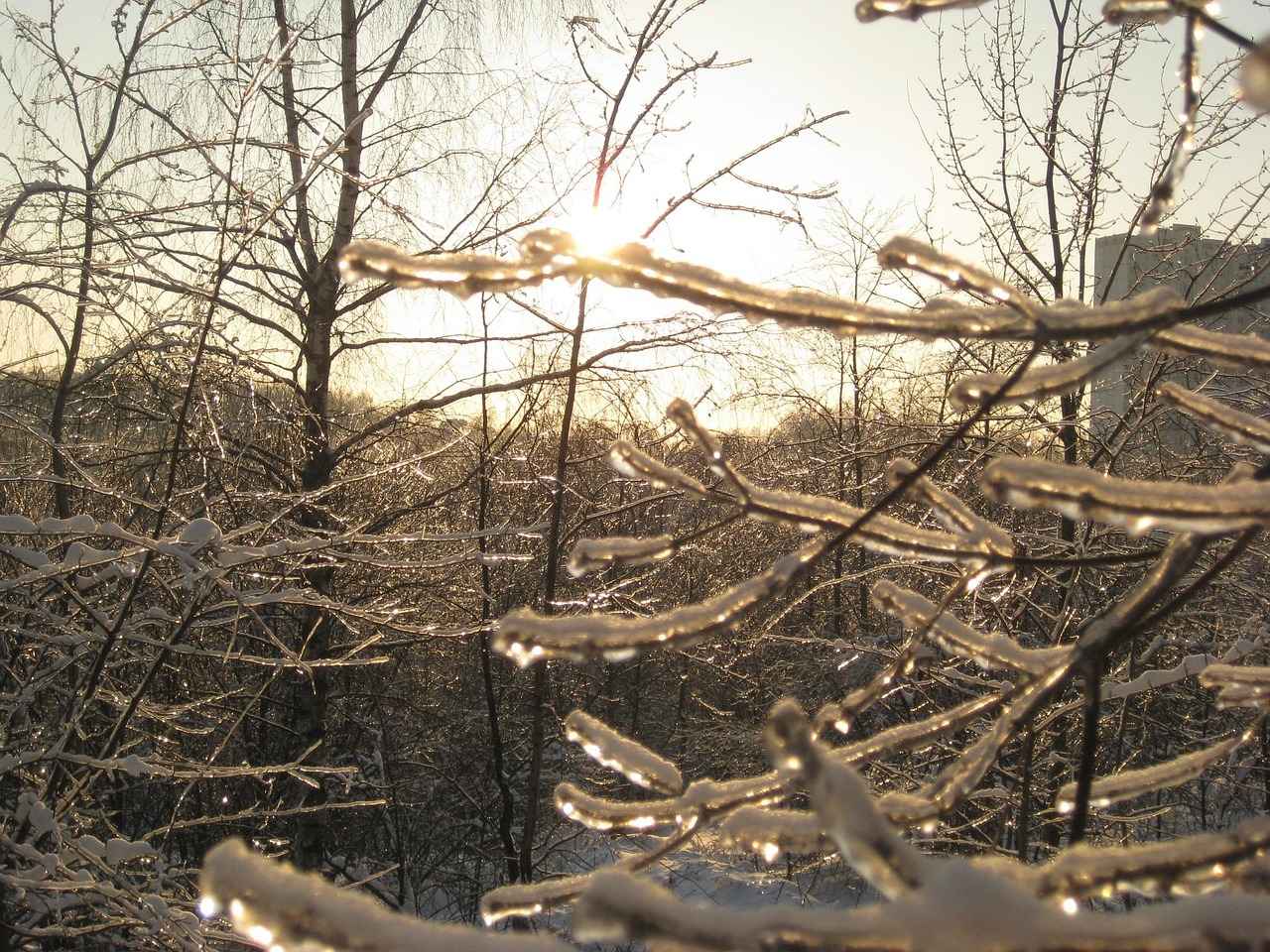
Factors Influencing Freezing Rates
The freezing rate of water is a fascinating topic that has intrigued scientists and curious minds alike. Various factors can significantly influence how quickly water transitions from a liquid to a solid state. This section delves into the critical variables that determine whether hot or cold water freezes faster, providing insights into the underlying mechanisms at play.
- Temperature of Water: The initial temperature of the water is perhaps the most obvious factor. Cold water, starting at lower temperatures, generally requires more energy to reach the freezing point compared to hot water. However, the Mpemba effect suggests that under certain conditions, hot water can freeze faster. This paradox invites further exploration into the conditions that allow this to occur.
- Container Material: The material of the container holding the water can also impact freezing rates. For instance, metal containers conduct heat more effectively than plastic ones. This means that water in metal containers may lose heat faster, potentially leading to quicker freezing times. Understanding the thermal conductivity of various materials is essential in analyzing freezing dynamics.
- Surface Area: The shape and surface area of the container play a crucial role in freezing rates. A wider container allows for a greater surface area, facilitating faster heat loss compared to a narrow one. This increased exposure to cold air can accelerate the freezing process, highlighting the importance of container design.
- Evaporation Rates: Evaporation can significantly influence the freezing process, especially for hot water. As hot water evaporates, it loses mass and energy, which can lead to a quicker drop in temperature. This phenomenon can contribute to the Mpemba effect, where hot water freezes faster than expected due to the loss of water through evaporation.
- Convection Currents: The movement of water molecules can also affect freezing rates. In hot water, convection currents are more vigorous, allowing for a more uniform temperature distribution. This can lead to a more efficient freezing process as the cooler water at the surface can more effectively replace the warmer water below.
- Atmospheric Pressure: The surrounding atmospheric pressure can influence the freezing point of water. Under lower pressure, water can freeze at a higher temperature, which may affect the freezing rate of both hot and cold water. Understanding the implications of pressure on phase changes is crucial in scientific studies related to freezing.
In conclusion, the factors influencing the freezing rates of water are multifaceted and interconnected. From the initial temperature and container material to evaporation and convection currents, each variable plays a role in determining how quickly water freezes. The Mpemba effect exemplifies the complexities of this phenomenon, challenging our understanding and encouraging ongoing research in the field.
Temperature and Pressure Conditions
Understanding the dynamics of freezing water is crucial in various scientific and practical applications. One of the key factors influencing the freezing process is the temperature and atmospheric pressure conditions. This section delves into how these elements affect the freezing rates of water, shedding light on the complexities involved.
Temperature plays a pivotal role in the freezing process. When water is cooled, its molecules begin to lose kinetic energy, leading to a gradual decrease in temperature. As the temperature drops to the freezing point (0°C or 32°F at standard atmospheric pressure), the water transitions from a liquid to a solid state. However, the rate at which this transition occurs can vary significantly based on initial conditions.
Interestingly, the initial temperature of the water can lead to different freezing rates. Hot water tends to have a higher evaporation rate, which can lead to a reduction in the total volume of water. This phenomenon, combined with other factors such as convection currents, can result in hot water freezing faster than cold water under certain conditions. This is a key aspect of the Mpemba effect, which challenges conventional wisdom about freezing rates.
In addition to temperature, atmospheric pressure also significantly influences the freezing process. At higher altitudes, where atmospheric pressure is lower, water can freeze at temperatures below 0°C. This can lead to faster freezing times in certain environments, as the lower pressure alters the boiling point and freezing point of water. Understanding how pressure interacts with temperature is crucial for accurately predicting freezing behavior.
Furthermore, the relationship between temperature and pressure can create unique scenarios in which freezing rates are affected. For instance, in a vacuum, water can freeze almost instantaneously due to the lack of pressure, despite its temperature being above the normal freezing point. This illustrates the complex interplay between these two factors and their significant impact on the freezing process.
Another critical aspect to consider is the container in which the water is held. The material and shape of the container can influence how heat is transferred away from the water. For example, metal containers typically conduct heat more efficiently than plastic ones, potentially leading to faster freezing times. Additionally, the surface area of the container can play a role; wider containers allow for more heat dissipation, which can accelerate the freezing process.
In summary, both temperature and atmospheric pressure are crucial variables that impact the freezing rates of water. The interplay between these factors, along with other elements such as container material and shape, creates a complex environment that can lead to varying freezing outcomes. Understanding these dynamics not only provides insights into the Mpemba effect but also enhances our overall knowledge of thermodynamics and phase transitions.
As researchers continue to explore these phenomena, it becomes increasingly clear that the freezing process is not merely a straightforward transition but rather a complex interplay of various factors. Further studies are essential to unravel the mysteries surrounding freezing rates and to apply this knowledge in practical applications, from ice production to climate science.
Container Material and Shape
When it comes to the freezing of water, the material and shape of the container holding the water play a significant role. Understanding how these factors influence freezing dynamics can provide insights into the Mpemba effect and its intriguing implications.
The material of the container can greatly impact the thermal conductivity, which is the ability of a material to conduct heat. For instance, metals such as aluminum and copper are known for their high thermal conductivity. This means that water contained in a metal container may lose heat more rapidly than water in a plastic or glass container. Consequently, this can lead to faster freezing times under certain conditions. In contrast, materials with lower thermal conductivity may insulate the water, slowing down the heat loss and prolonging the freezing process.
Additionally, the shape of the container affects how evenly heat is distributed throughout the water. A wide, shallow container allows for a greater surface area, facilitating more efficient heat loss compared to a tall, narrow container. This phenomenon can be explained by the principles of convection, where warmer water rises and cooler water descends. In a shallow container, convection currents can establish more rapidly, promoting faster cooling and freezing.
| Container Material | Thermal Conductivity | Effect on Freezing Time |
|---|---|---|
| Metal (e.g., Aluminum) | High | Faster Freezing |
| Glass | Moderate | Moderate Freezing |
| Plastic | Low | Slower Freezing |
Moreover, the size and shape of the container can also influence how air circulates around it. For example, a container with a larger opening may allow for better air circulation, which can enhance the cooling effect. Conversely, a tightly sealed container may trap heat and moisture, further delaying the freezing process.
In practical applications, understanding these dynamics can be beneficial. For instance, industries involved in ice production can optimize their processes by selecting appropriate container materials and shapes to enhance efficiency. Similarly, home users can experiment with different containers to achieve quicker freezing times for ice cubes or frozen treats.
In conclusion, the interplay between the material and shape of the container significantly affects the freezing dynamics of water. By selecting the right container, one can optimize freezing times and leverage the Mpemba effect to their advantage. As research continues to explore these fascinating interactions, further insights may emerge, enhancing our understanding of this captivating phenomenon.
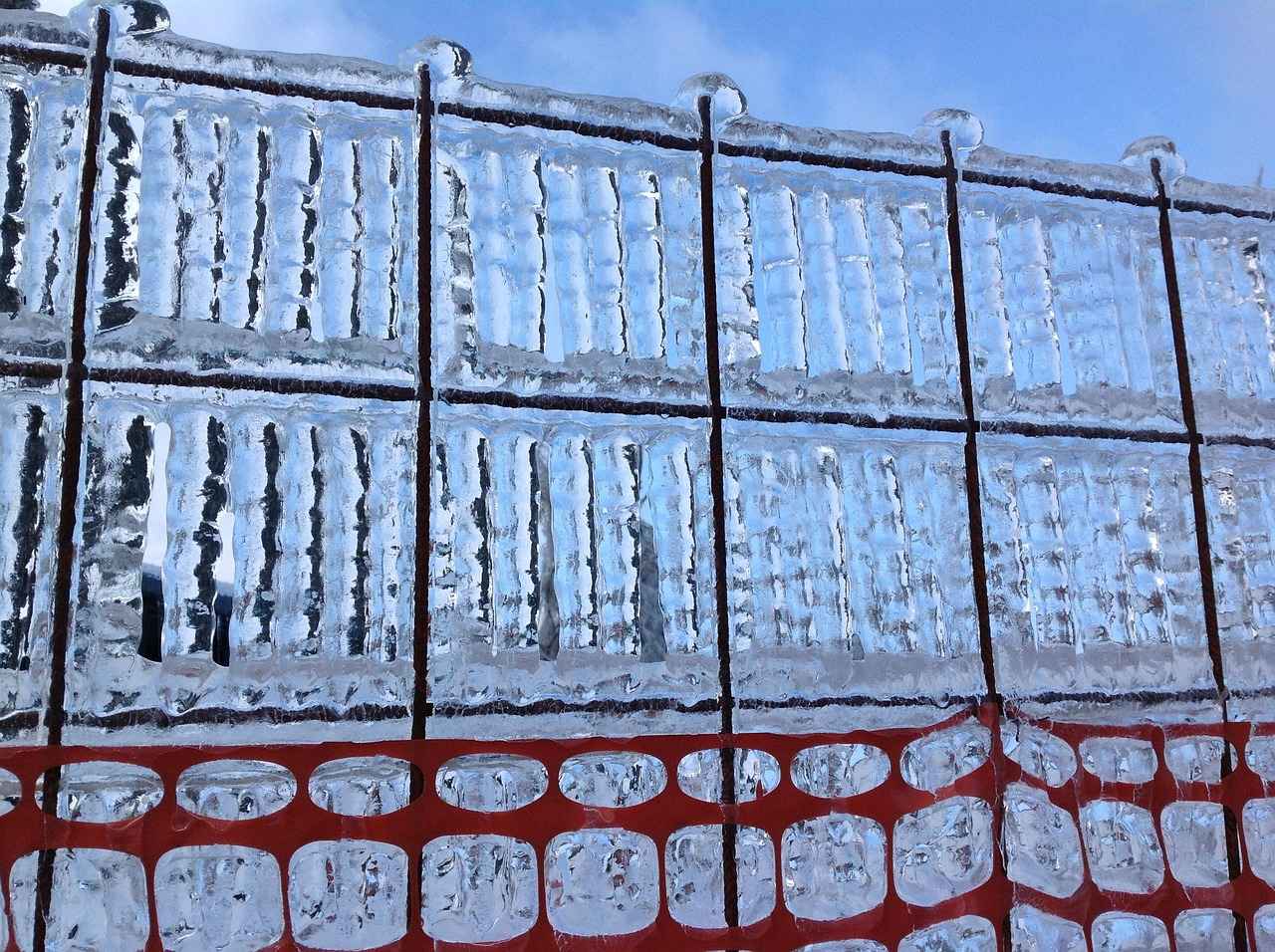
Practical Implications of the Mpemba Effect
The Mpemba effect, the phenomenon where hot water can freeze faster than cold water under certain conditions, has garnered significant attention in scientific circles. Understanding its practical implications can lead to innovative applications across various fields.
One of the most intriguing applications of the Mpemba effect is in the ice production industry. By leveraging this phenomenon, manufacturers can optimize their processes, resulting in faster ice production times. For instance, when hot water is used in the initial stages of ice-making, the evaporation of some water can create a lower volume that freezes more quickly. This not only enhances efficiency but also reduces energy consumption, making the process more sustainable.
The Mpemba effect also holds significant relevance in climate science. Understanding the freezing processes of water can aid researchers in modeling various environmental phenomena. For example, the behavior of ice formation in polar regions can be better understood through the principles of the Mpemba effect. This knowledge can contribute to more accurate climate models, helping scientists predict changes in ice cover and its impact on global sea levels.
In everyday life, the Mpemba effect can be observed in practical situations, such as when making ice cubes at home. Utilizing hot water instead of cold can speed up the freezing process, allowing for quicker access to ice for beverages or cooling purposes. This simple application can save time and enhance the overall experience of hosting gatherings or enjoying chilled drinks.
In the culinary world, understanding the Mpemba effect can influence cooking techniques. For example, chefs can use hot water for certain recipes that require rapid cooling or freezing, such as making sorbets or ice creams. By applying the principles of this phenomenon, culinary professionals can achieve better textures and flavors in their frozen creations.
The Mpemba effect also serves as an excellent educational tool in science classrooms. It provides a fascinating topic for experiments, encouraging students to explore the principles of thermodynamics and heat transfer. By conducting simple experiments, students can observe the Mpemba effect firsthand, fostering a deeper understanding of scientific concepts and critical thinking skills.
Overall, the Mpemba effect is not just a scientific curiosity; it has practical implications that can be harnessed in various fields, from industrial ice production to culinary arts. As we continue to explore and understand this intriguing phenomenon, we may uncover even more applications that can enhance efficiency and innovation in our daily lives and scientific endeavors.
Applications in Ice Production
The Mpemba effect, a fascinating phenomenon where hot water freezes faster than cold water under specific conditions, has intriguing implications for various industries, particularly in ice production. By leveraging this effect, industries can enhance their processes, leading to increased efficiency and reduced energy consumption.
Understanding the Mpemba effect allows ice production facilities to optimize their freezing methods. One of the primary benefits is the potential for energy savings. Traditional ice-making processes often rely on cold water, which requires more time and energy to reach freezing temperatures. By utilizing hot water, facilities can significantly reduce the time it takes to produce ice, thereby lowering energy costs.
Moreover, the Mpemba effect can lead to improved product quality. When ice is produced quickly, it tends to form smaller crystals, resulting in a denser and clearer ice product. This is particularly important in industries such as culinary arts and beverage production, where the quality of ice can affect the overall experience of the consumer. Clear ice not only looks more appealing but also melts more slowly, maintaining the integrity of drinks for a longer period.
Another advantage of applying the Mpemba effect in ice production is the reduction of bacterial growth. Hot water has a higher temperature, which can help in reducing the presence of bacteria and impurities that may be present in cold water. This leads to a cleaner ice product that is safer for consumption, aligning with health and safety standards in food production.
In addition to these benefits, the Mpemba effect can also streamline the logistics of ice production. Facilities that can produce ice more rapidly can respond better to demand fluctuations, ensuring that they can meet the needs of their customers without overproducing or wasting resources. This flexibility can be particularly advantageous during peak seasons or special events when ice demand surges.
Industries can also explore innovative technologies that harness the Mpemba effect. For example, the development of specialized containers that facilitate faster freezing of hot water could be a game-changer. These containers might incorporate materials that enhance heat transfer, allowing hot water to freeze more efficiently. Research into such technologies could lead to breakthroughs in ice production processes.
Furthermore, the Mpemba effect has potential applications beyond traditional ice production. For instance, it could be beneficial in climate control systems, where efficient freezing methods can contribute to energy savings in refrigeration and air conditioning. Understanding the principles behind the Mpemba effect can inspire new designs and methodologies across various industries.
As industries continue to explore the implications of the Mpemba effect, it becomes clear that this phenomenon is not just a scientific curiosity but a practical tool for enhancing efficiency and product quality in ice production. By embracing this knowledge, industries can innovate and adapt, ultimately leading to better outcomes for both producers and consumers alike.
Relevance in Climate Science
The Mpemba effect not only intrigues scientists and curious minds alike but also plays a significant role in the realm of climate science. Understanding the freezing processes of water is crucial for various environmental studies, and the Mpemba effect offers unique insights into these phenomena. This section delves into the relevance of the Mpemba effect in climate science, exploring how it can enhance our understanding of environmental changes and water dynamics.
One of the primary reasons the Mpemba effect is significant in climate science is its implications for ice formation in natural environments. As global temperatures rise due to climate change, the dynamics of ice melting and formation in polar regions are altered. By studying how hot and cold water freeze under different conditions, researchers can gain insights into the behavior of ice in these critical ecosystems. This understanding can help predict how ice sheets and glaciers will respond to changing temperatures, which is vital for assessing future sea-level rise.
Furthermore, the Mpemba effect can shed light on the thermal properties of water and how they interact with atmospheric conditions. For instance, when hot water is exposed to cold air, it may lose heat at different rates compared to cold water. This phenomenon can affect local climates, particularly in regions where water bodies play a significant role in regulating temperature. By examining the Mpemba effect, scientists can better understand these interactions and their broader implications for climate models.
| Factor | Impact on Freezing |
|---|---|
| Temperature | Hot water may lose heat faster under certain conditions, influencing freezing rates. |
| Air Pressure | Changes in pressure can alter the boiling point and freezing point of water. |
| Container Type | Different materials can affect heat retention and transfer, impacting freezing times. |
Additionally, the Mpemba effect can provide insights into the evaporation rates of water. Hot water tends to evaporate more quickly than cold water, which can lead to a reduction in volume that may influence the freezing process. Understanding these evaporation dynamics is crucial in climate science, as they can affect water availability in various ecosystems, particularly in arid regions.
Moreover, the study of the Mpemba effect can enhance our understanding of biological processes in aquatic environments. For example, certain aquatic organisms rely on specific temperature ranges for survival. By comprehending how temperature fluctuations affect freezing rates, scientists can better predict the impacts of climate change on these species and their habitats.
In conclusion, the Mpemba effect offers valuable insights into the complexities of freezing processes, which are pivotal in climate science. By understanding how hot and cold water behave under various conditions, researchers can enhance their knowledge of ice dynamics, evaporation rates, and the biological implications for aquatic life. This knowledge is essential for developing effective strategies to mitigate the impacts of climate change and protect vulnerable ecosystems.
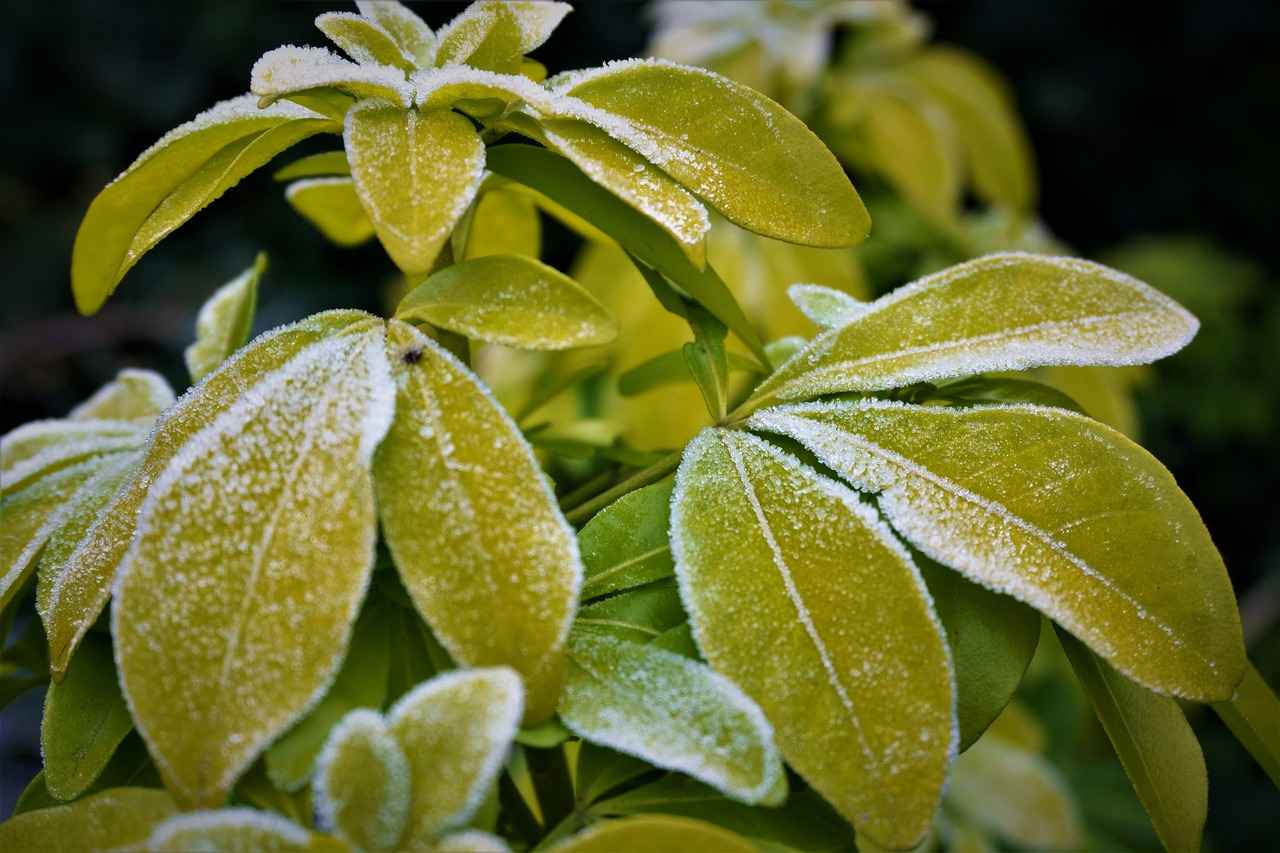
Common Misconceptions About Freezing Water
When it comes to the freezing of water, several misconceptions often arise, leading to confusion and misunderstanding. This section aims to clarify these common myths and provide accurate information regarding the freezing process.
A prevalent myth is that hot water always freezes faster than cold water. While the Mpemba effect suggests that under certain conditions, hot water can freeze more quickly, it is not a universal rule. Factors such as the initial temperature, the environment, and the specific conditions of the freezing setup play crucial roles in determining the actual freezing time. Therefore, it’s essential to understand that while hot water can freeze faster in some scenarios, it is not a guaranteed outcome.
Many people believe that the presence of impurities in water, such as minerals or contaminants, significantly affects freezing times. In reality, while impurities can influence the freezing point of water (known as freezing point depression), their impact on the rate of freezing is often overstated. Pure water can freeze at 0°C, but the freezing process can be altered by factors like the type and concentration of impurities. Understanding these nuances is essential for a clearer perspective on how water freezes.
Another common misconception is that freezing is a straightforward process. In truth, freezing involves complex thermodynamic principles. The rate at which water freezes can be influenced by various factors, including temperature, pressure, and the shape and material of the container. For instance, metal containers may conduct heat away more effectively than plastic ones, leading to different freezing times. Thus, the freezing process is far from simple and is affected by multiple variables.
Some individuals assume that all water freezes uniformly, but this is not the case. The structure of the water molecules and their arrangement during the freezing process can lead to varying freezing patterns. For example, water in a shallow tray may freeze faster than water in a deep container due to the larger surface area exposed to cold air. Understanding these dynamics helps clarify why freezing can occur at different rates depending on the conditions.
Lastly, many people think that freezing water happens instantly. In reality, freezing is a gradual process that can take time, depending on the conditions. Factors such as ambient temperature, airflow, and the volume of water all contribute to how quickly water transitions from liquid to solid. This gradual transition is crucial for understanding the freezing process and dispelling the myth of instantaneous freezing.
In summary, acknowledging these misconceptions about freezing water is vital for a comprehensive understanding of the phenomenon. By debunking myths and providing accurate information, we can foster a better appreciation of the complexities involved in the freezing process.
Hot Water Always Freezes Faster
The belief that than cold water is a common misconception that has intrigued scientists and laypeople alike for decades. This idea, often referred to in the context of the Mpemba effect, suggests that under certain conditions, hot water can indeed freeze faster than cold water. However, this phenomenon is not as straightforward as it may seem and is influenced by various factors.
To understand why this myth persists, we must first explore the conditions that lead to the Mpemba effect. One of the primary factors at play is evaporation. When hot water is placed in a freezing environment, it loses mass due to evaporation more rapidly than cold water. This reduction in volume means there is less water to freeze, potentially leading to a quicker freezing time.
Another significant factor is convection currents. Hot water tends to circulate differently compared to cold water, creating convection currents that can enhance the cooling process. These currents can facilitate a more uniform temperature distribution, allowing the water to reach the freezing point more efficiently.
Moreover, the container’s material and shape can also influence freezing rates. For example, metal containers conduct heat better than plastic ones, which can impact how quickly the water cools down. A shallow, wide container may allow hot water to freeze faster than cold water in a deep, narrow container due to increased surface area exposure to the cold air.
It’s also essential to consider temperature and pressure conditions. The surrounding environment plays a crucial role in the freezing process. If the ambient temperature is significantly lower than the freezing point, both hot and cold water will freeze faster. However, under specific conditions, such as when the hot water is initially at a high temperature, it may experience a unique set of thermal dynamics that promote faster freezing.
Despite these scientific explanations, the Mpemba effect remains a topic of debate. Various studies have produced conflicting results, with some confirming the phenomenon while others refute it. The inconsistency in findings highlights the complexities of water’s behavior during freezing and suggests that more research is necessary to fully understand the underlying mechanisms.
In practical terms, the Mpemba effect can have implications in various fields. For instance, in ice production, understanding this phenomenon can lead to more efficient methods for creating ice in industrial settings. Similarly, in climate science, insights into freezing processes can enhance our understanding of environmental changes and their impact on ecosystems.
In conclusion, while the idea that hot water freezes faster than cold water is a captivating notion, it is essential to approach this claim with a critical mindset. Various factors contribute to the freezing rates of water, and the Mpemba effect, while fascinating, does not universally apply. As research continues, our understanding of this phenomenon will likely evolve, shedding more light on the intricate behaviors of water as it transitions from liquid to solid.
The Role of Impurities in Water
When exploring the fascinating dynamics of water freezing, one critical aspect to consider is the role of impurities in water. Many individuals may not realize how these impurities can significantly affect the freezing process, leading to variations in freezing times that challenge our understanding of basic physical principles.
Impurities in water can include a variety of substances such as minerals, salts, and organic matter. These components play a crucial role in altering the freezing point of water. When impurities are present, they disrupt the orderly arrangement of water molecules as they attempt to form a solid structure. This disruption can lead to a phenomenon known as freezing point depression, where the presence of solutes causes the freezing point to drop below the standard 0°C (32°F).
Furthermore, the type and concentration of impurities can lead to differing effects on freezing rates. For instance, water with higher concentrations of salt will freeze at lower temperatures compared to pure water. This principle is often observed in natural environments, such as oceans, where the salinity affects the freezing processes during colder months.
Another factor to consider is the nucleation sites provided by impurities. Nucleation is the initial step in the formation of ice crystals, and impurities can serve as sites for these crystals to form. In pure water, the lack of nucleation sites can lead to supercooling, where water remains in a liquid state below its freezing point. In contrast, when impurities are present, they can facilitate the formation of ice, potentially speeding up the freezing process.
In addition to affecting freezing times, impurities can also influence the overall structure and quality of the ice formed. For example, ice made from contaminated water may have a cloudy appearance and a lower structural integrity compared to ice made from pure water. This is particularly important in applications such as ice production for food and beverages, where the quality of ice is paramount.
To illustrate the impact of impurities, consider the following table that summarizes different types of impurities and their effects on freezing:
| Type of Impurity | Effect on Freezing Point | Example |
|---|---|---|
| Salt | Decreases freezing point | Seawater |
| Sugar | Decreases freezing point | Sweetened water |
| Minerals | Varies; often decreases freezing point | Hard water |
| Organic Matter | Can either increase or decrease freezing point | Polluted water |
In conclusion, the presence of impurities in water plays a vital role in the freezing process. By understanding how these impurities affect freezing times and ice quality, we can gain deeper insights into both natural and industrial processes involving water. This knowledge not only enhances our scientific comprehension but also has practical implications in various fields, from environmental science to food production.
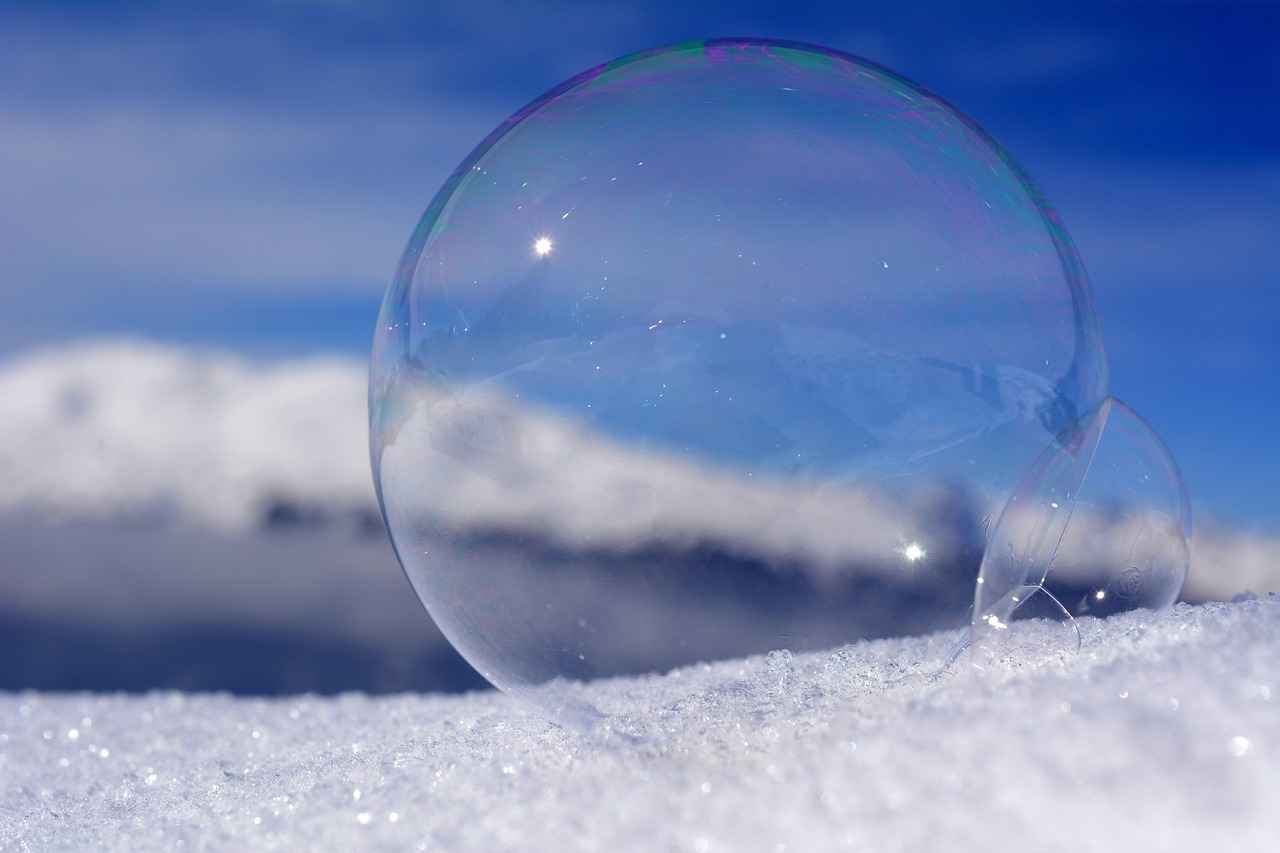
Conclusion: The Ongoing Mystery of Freezing Water
The Mpemba effect, which suggests that hot water can freeze faster than cold water under certain conditions, continues to perplex scientists around the world. Despite extensive research, this phenomenon remains a topic of debate, prompting questions about the fundamental properties of water and the mechanisms of freezing. This article explores the ongoing mystery surrounding the Mpemba effect and encourages further exploration into the freezing behavior of water.
Understanding the Mpemba effect requires a look at several factors that contribute to the freezing process. One of the most notable factors is evaporation. When hot water is placed in a freezing environment, a portion of it may evaporate, reducing the overall volume of water that needs to freeze. This loss of mass can lead to a quicker freezing time, as there is less water to cool down.
Another important aspect is convection currents. Hot water can create convection currents that enhance the distribution of temperature throughout the liquid. This means that the water may cool more uniformly, potentially leading to a faster freezing process. Additionally, the temperature gradient between the hot water and the surrounding environment can influence how quickly the water loses heat.
Furthermore, the container material and shape can significantly impact freezing rates. Different materials conduct heat at varying rates; for example, metal containers may facilitate faster heat loss compared to plastic ones. The shape of the container can also affect how air circulates around the water, which can influence the cooling rate.
Despite these insights, the Mpemba effect remains controversial. Some researchers argue that the effect is not universally applicable and can depend heavily on specific conditions such as the initial temperature of the water, the environment, and the presence of impurities. The debate surrounding these variables highlights the complexity of the freezing process and the need for further investigation.
A significant challenge in studying the Mpemba effect is the role of impurities in water. Many believe that impurities can alter freezing times, yet the exact influence of these impurities is still not fully understood. Some studies suggest that impurities can disrupt the formation of ice crystals, while others indicate that they may not have a significant effect on the freezing rate.
Moreover, the historical context of the Mpemba effect adds another layer of intrigue. Erasto Mpemba’s initial observations in the 1960s sparked a wave of scientific inquiry, yet skepticism from the scientific community persisted for decades. This skepticism has fueled ongoing research, with numerous studies attempting to replicate and understand the effect under controlled conditions.
In conclusion, the Mpemba effect exemplifies the complexities of physical phenomena and the need for continued scientific exploration. As researchers delve deeper into the freezing behavior of water, they uncover new insights that challenge conventional wisdom. The ongoing debate not only enriches our understanding of water but also serves as a reminder of the mysteries that still exist in the natural world. As we continue to explore the intricacies of freezing processes, we may ultimately unlock answers that have eluded scientists for generations.
Frequently Asked Questions
- What is the Mpemba effect?
The Mpemba effect is the surprising phenomenon where hot water can freeze faster than cold water under certain conditions. It challenges our intuitive understanding of freezing and has intrigued scientists for decades.
- Why does hot water freeze faster than cold water?
Several theories attempt to explain this effect, including evaporation, which reduces the volume of water, and convection currents that can enhance cooling. However, the exact reasons are still debated among scientists.
- Are there specific conditions that influence the Mpemba effect?
Yes! Factors like temperature, atmospheric pressure, and even the type of container used can significantly affect freezing rates. For instance, a wider container may allow for faster heat dissipation.
- Is it true that hot water always freezes faster?
No, this is a common misconception. Hot water does not always freeze faster; it depends on various factors and conditions that need to be met for the Mpemba effect to occur.
- How can the Mpemba effect be applied in real life?
The Mpemba effect has practical applications in fields like ice production and climate science. Understanding this phenomenon can help improve efficiency in ice-making processes and contribute to environmental studies.
